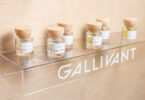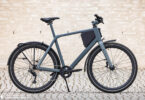What is it about Copenhagen’s air of nonchalance that sets stress levels to zero and produces a population that’s one of the happiest in the world? On this DOWNTOWN Urban Getaway Copenhagen powered by WINORA we took to its bike paths to switch on our motors and switch off our racing minds.
What is the DOWNTOWN Urban Getaway series?
What do urban spaces of the future look like? What can the world’s most bike-friendly cities teach us? Insider spots, hidden corners, the must-sees minus the crowds, top tips and route guides – the DOWNTOWN Urban Getaway series powered by WINORA explores urban culture, going beneath the surface of the world’s most-hyped cities on a first-name basis with locals to scout inspiration and motivation for a better tomorrow.
Along with the local lingo, each guide includes the city’s dos and don’ts, as well as the A-B-C on where to find your flat whites, tuck into sensational food, or sip a fresh beverage. As each Urban Getaway is done by bike, we also unpick the best builds for the city. Ready? Let’s go.
- Why is Copenhapen so happy – Lessons from the laidback capital
- Hygge and the Law of Jante – Why the nation is so relaxed
- By bike and breathless across the city – A European bike capital that’s not for beginners
- Paris of the North – Why is Copenhagen so damn cool?
- Getaway Essentials – Hotels, Bars, Restaurants, Dos and Don’ts in Copenhagen
- Escape faster – Our Copenhagen-approved electric urban whips in detail
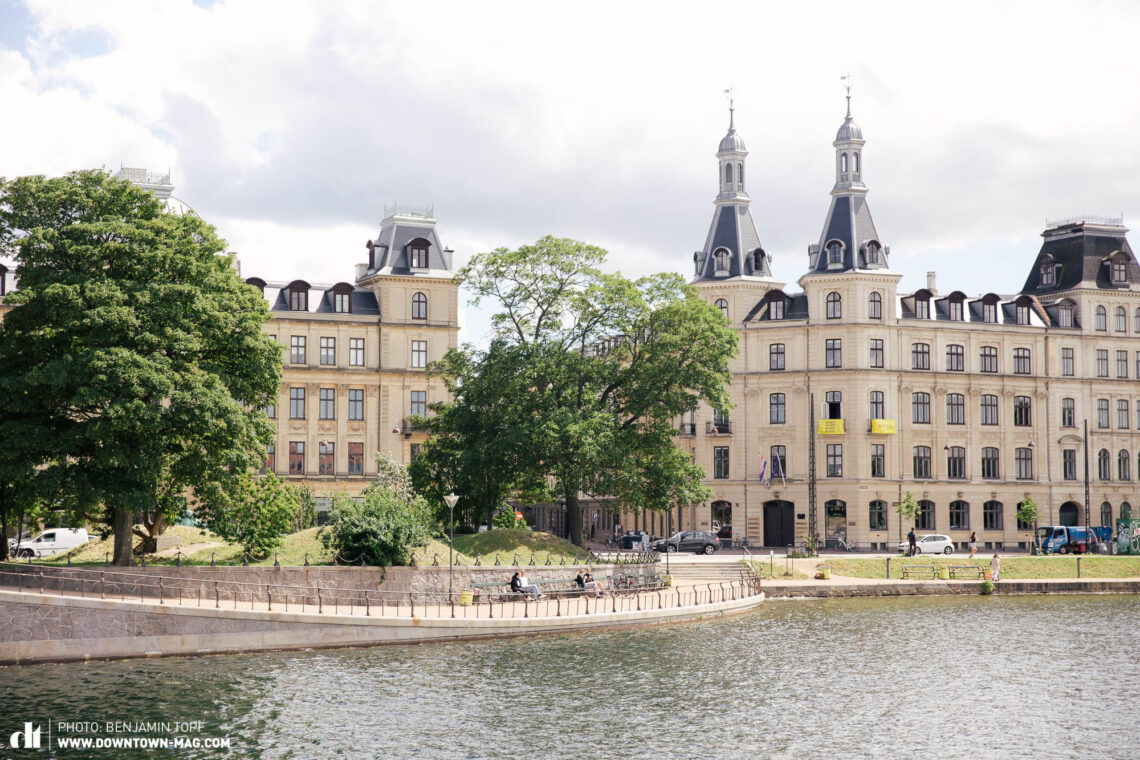
1. Why is Copenhapen so happy – Lessons from the laidback capital
Say after us: cool, calm and collected. But what is it about Copenhagen that makes it such a nonchalant capital? We’re pretty sure it can’t lie exclusively with the fashion, design and bike-friendliness, so we set off after the cargo bike-riding, chain-smoking royal family to find out the reasons why.
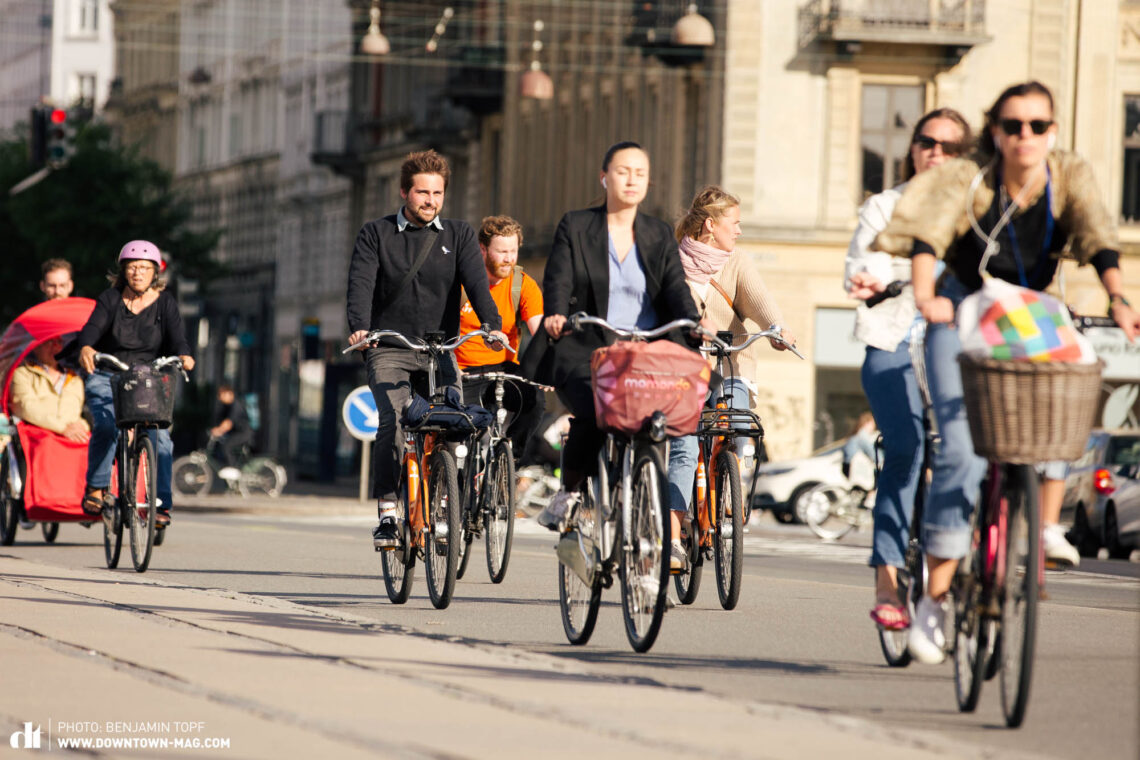
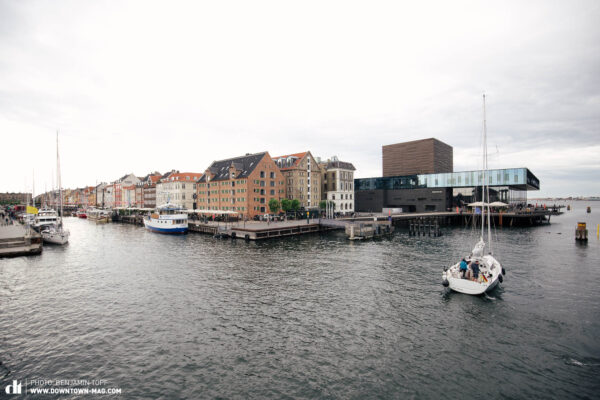
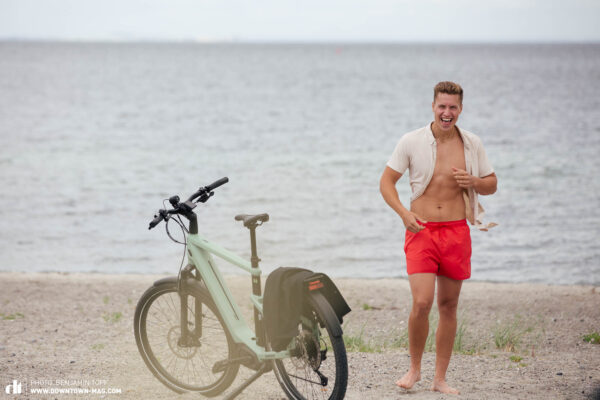

Once upon a time… From fishing to fashion
There’s a stretch of water called the strait of Øresund that connects the Baltic Sea with the North Sea. From the Danish side, you can see Sweden on a clear day as it’s only 8 km away. Here you can trace the official history of Copenhagen back to the year 1167 when the then bishop built a castle. The castle’s remains are somewhere beneath Christiansborg Palace, which is where the Danish Parliament meets these days (as seen in Netflix’s Borgen). Once the emerging fishing village had a fortress to protect it, it set out trading and got the name Kobmandehavn, which literally means ‘merchants’ port’. From here, its fishing trade could boom, it was granted the privilege of becoming a city, and money started flowing. Over the coming centuries – much like the rest of Europe – there were wars, power struggles, plagues, great fires and other catastrophes. After mounting pressure from the population, Denmark became a constitutional monarchy in 1849. As Denmark industrialised through the 19th century, Copenhagen boomed, tallying up a population of around 400,000 by 1900. After the Second World War, Copenhagen experienced its first wave of tourism and people started coming here for two things: Tivoli and the Little Mermaid.
The Little Mermaid, Tivoli and the Changing of the Guards
We’ve got nothing against travel guides with a ticklist of to-dos, but let’s get this out in the open: Is that really how big the Little Mermaid is? Have we really come all this way to see this thumb size sculpture? We’ll take Tivoli – a charming amusement park – and sure, we’ll nod our heads at the changing of the guards at Amalienborg Palace; at least the Dane’s approach isn’t anywhere near as pompous or stuffy as the equivalent outside Buckingham Palace in London. But surely there’s got to be more to Copenhagen than these three things?
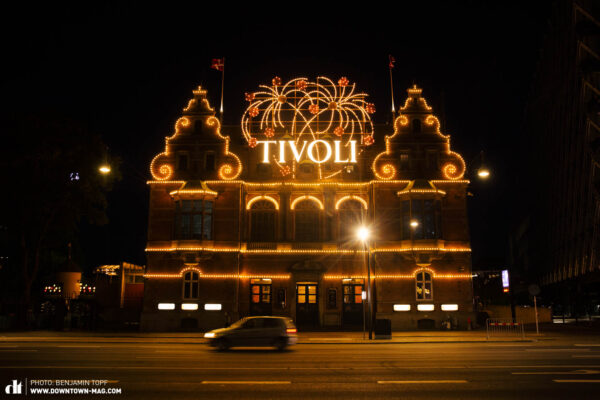

A chain-smoking queen and a cargo bike-riding Crown Prince
If you’re looking for an example of Danish understatement, look no further than the royal family. Extravagant and a little crass, but mainly down-to-earth, relatable and a touch quirky – these are the traits that have genuinely endeared most of the Danish population to the royals. Queen Margrethe of Denmark is the head of the house, having ascended the throne in 1972. She’s fairly unconventional, with smoking being her biggest vice. When not doing royal duties, she’s designing theatre sets and costumes, or painting. In fact: she even published illustrations under the pseudonym Ingahild Grathmer in the Danish edition of Lord of the Rings. One son – Frederik – who had a bit of a wild phase in his teens, is now more popular than ever amongst the Danes and often spotted out and about with his cargo bike and his sons. Nikolai the nephew is also worth a mention – look out for him on the runway for Dior or the next cover of Vogue.
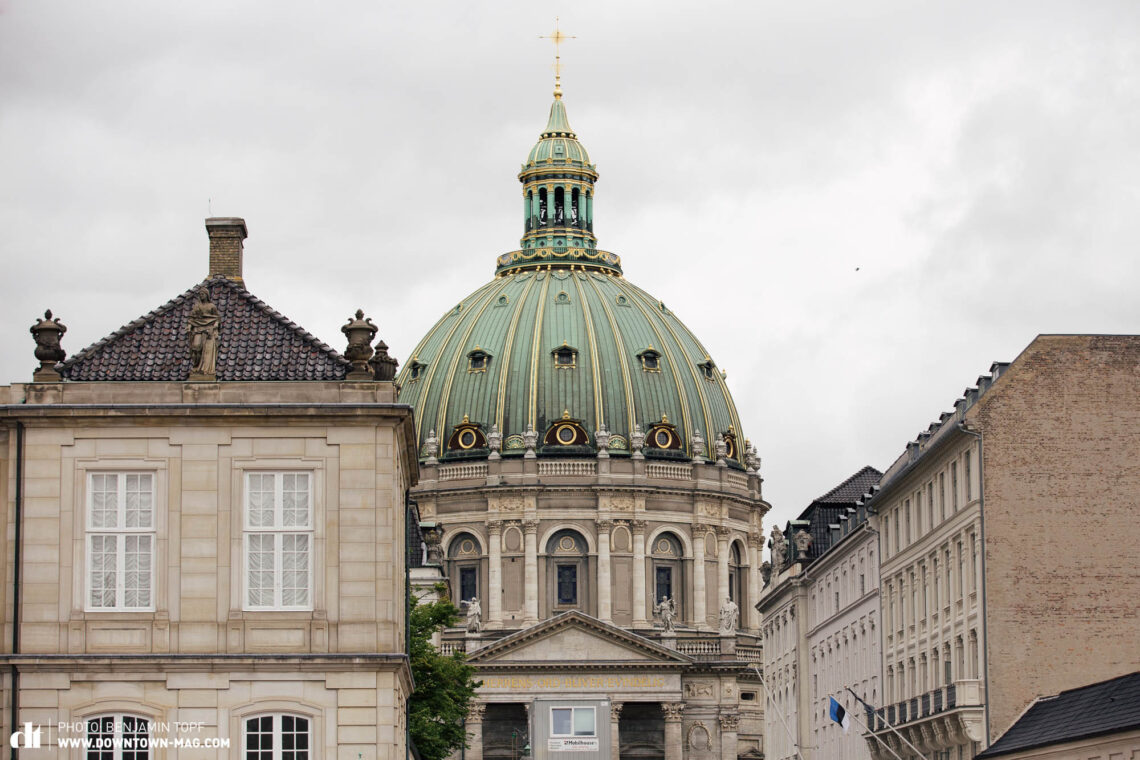
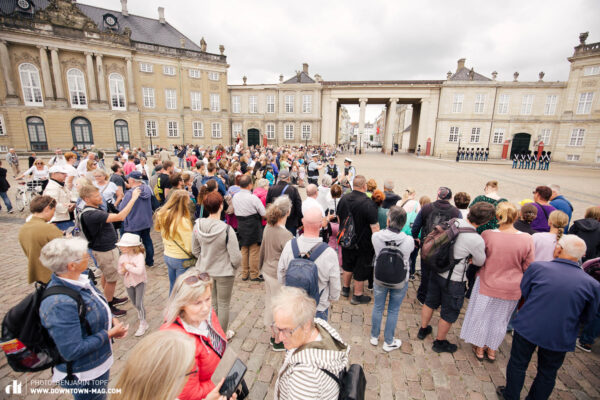
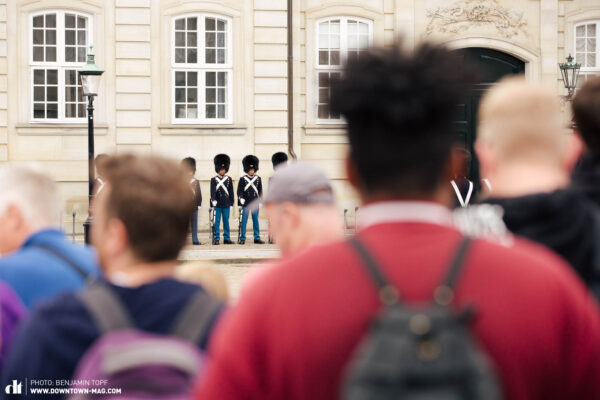
Where the Royals lay their heads and the crowds crane their necks – Amalienborg Palace is a hit with the tourists.
Dominating the design landscape
Transitioning from pillaging Vikings (huge exaggeration) to having the brightest ideas in design (largely true) was not an overnight thing, but by the 1940s and 50s, you could sense change in the air. Danish design was getting seen, with a strong design language that was (and still is, really) all about simple lines, functionality and minimalism. One reason for this simplicity goes back to the shortage of materials in the post-war period, but the designs also had a purpose: produce items that are high quality, long-lasting and serve a purpose. That’s probably why these pieces have aged so well. Designers like Georg Jensen and Arne Jacobsen helped make a name for Danish design and elements of their classic designs continue to get used today. Originality, anyone? These designers didn’t limit themselves to furniture or interior design – oh no, they even made waves in the international architecture scene too.

When riding around Copenhagen, you’ll start to notice how there’s a whole lot more to the city’s eye-catching architecture than off-the-scale visual attraction – it’s there for a purpose, and is tailored and engineered to suit the people who use it, live there, and benefit from it. Look twice, and you might even spot another asset to a building.
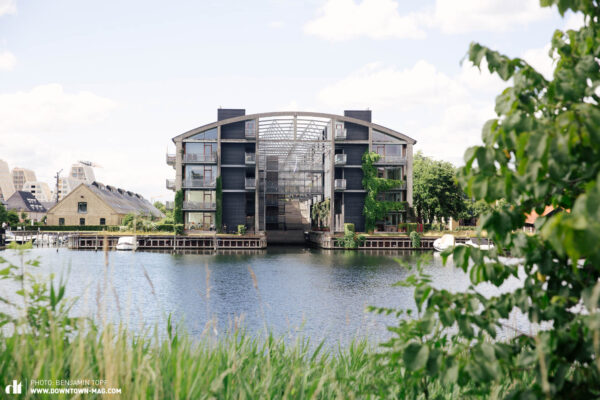
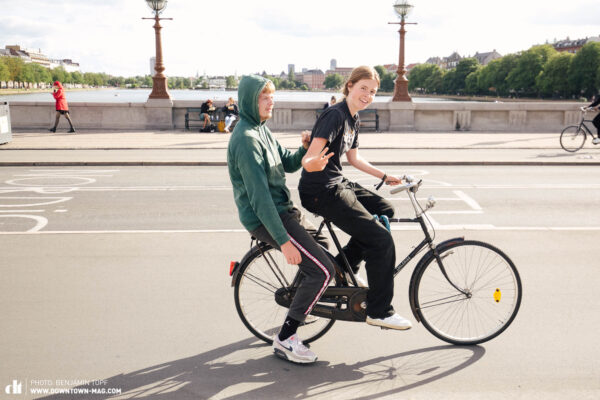
Illegalize it – Christiania for everyone from hippies to Hells Angels
Peace, Love and Drugs: As an antidote to the rest of the city, there’s the freetown of Christiania in the neighbourhood of Christianshavn. Founded in 1971, and rarely free of controversy, Christiania sits in 34 hectares of old military barracks and ramparts, covered with lush green vegetation. At the entrance you can read the rules (with the main one being not to take photos), and you’ll spot a giant troll in front of some graffiti that reads ‘The world is in our hands.’ The troll – a wooden sculpture that’s part of a series called Hidden Giants made of discarded wooden waste in the community – was created by the artist Thomas Dambo. The photo rule mainly applies because people live here, properly, and mainly on Pusher Street, where soft drugs are sold. While the community’s general consensus is against drugs, there’s a grey area between the dream and the reality; allegedly there’s some involvement from Hells Angels too. The basic idea of Christiania is to promote freedom and self-determination, and there’s a culture of grassroots decision-making on who may or may not live here. There are rules against violence and hard drugs, but the lofty free will goals of the residents have often been overshadowed by criminals and drug cartels who’ve muscled in and enforced their own law – the law of the strongest. A unique slice of the pie within Europe, we’d love to see eternal peace in this self-governing town.
There is much to love about Christiania, but it’s the creativity of the residents and street artists that gets us. So much of what you see here has been made by what already exists in that very spot – the barracks and the houses. If you want to see examples of upcycling at its best, here’s where to come.

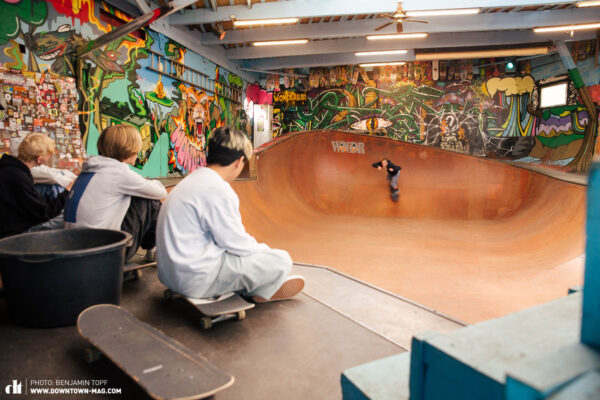
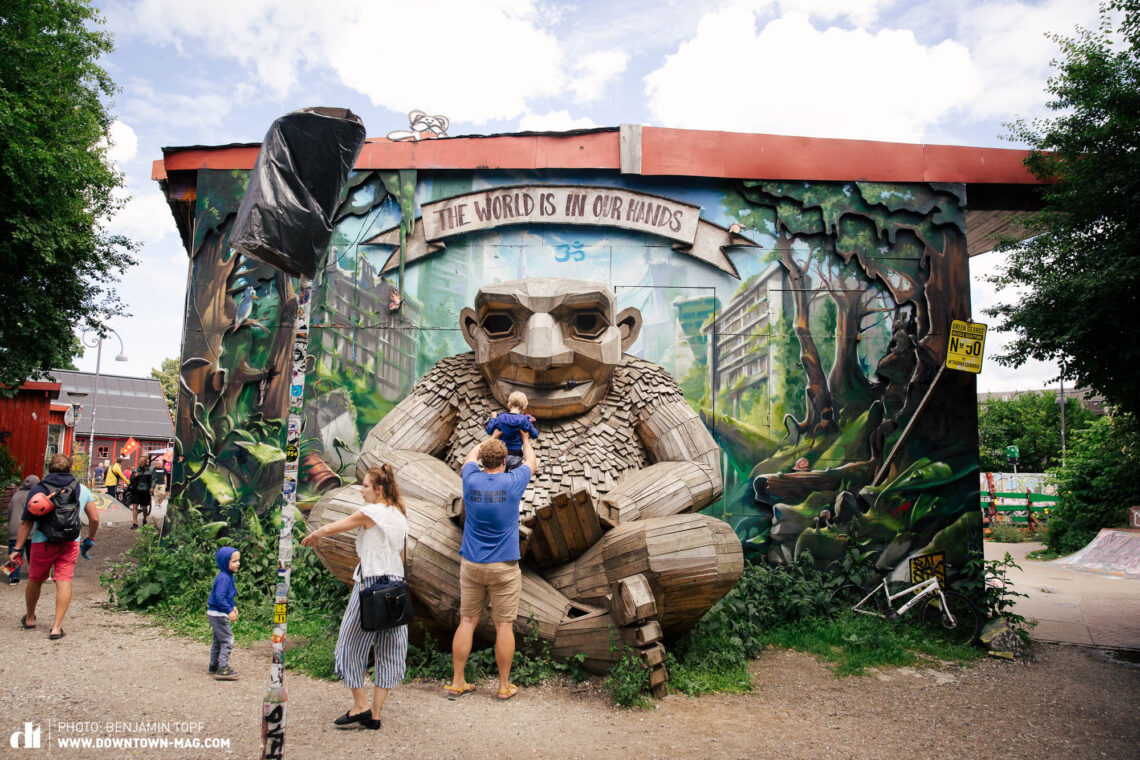
Massive but not easy to find: the Hidden Giants, or Forgotten Giants, created with repurposed wood by the artist Thomas Dambo, are a statement on our throwaway culture. There are six of these friendly giants in and around Copenhagen, but one of the easiest to spot is the Green George at the entrance to Christiania.
A royal family that is down-to earth, architecture that amazes you on almost every block, quintessential Scandinavian design, and a hippie free state with a drug problem – clearly the real draw to Copenhagen is how it’s filled with contrasts, but never too many crowds, especially once you’re away from the tourist hotspots. We caught up with some locals to discover their take on the finest, most liveable qualities of Copenhagen.
2. Hygge and the Law of Jante – Why the nation is so relaxed
Once we’d hopped on a bike and joined the locals, it became clear that there was much more to Copenhagen than just the busy tourist spots. We slid into the DMs of some long-term residents as well as some newer and non-Danish born faces to get their insider perspective on Copenhagen’s quirks and the exact meaning of hygge.
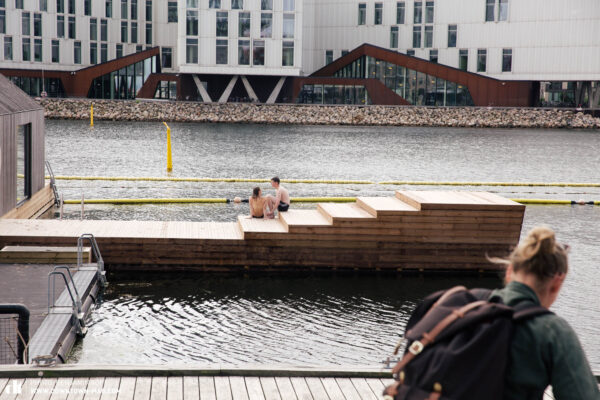
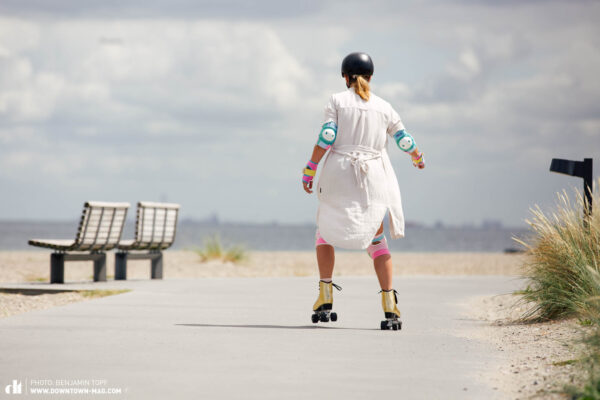
Everyone has heard of hygge, but that doesn’t make it any easier to explain. Basically untranslatable, it captures a concept, a lifestyle, a way of being, and here in Denmark, it’s everywhere. It’s not just candles and cushions, we’re told, even though the Danes’ candle consumption is allegedly somewhat high compared to the rest of Europe. Hygge can be anything from cute cafes or picnics on summery days, to bike rides in good company or street parties and barbecues with your best mates. Picture yourself enjoying the finer things in life, surrounded by lovely friends or family, and throw in a cinnamon bun or something Instagram-worthy too; that’s truly hygge. The main trait – and something that the Danes appear to be world champions at – is having a distinct lack of stress.
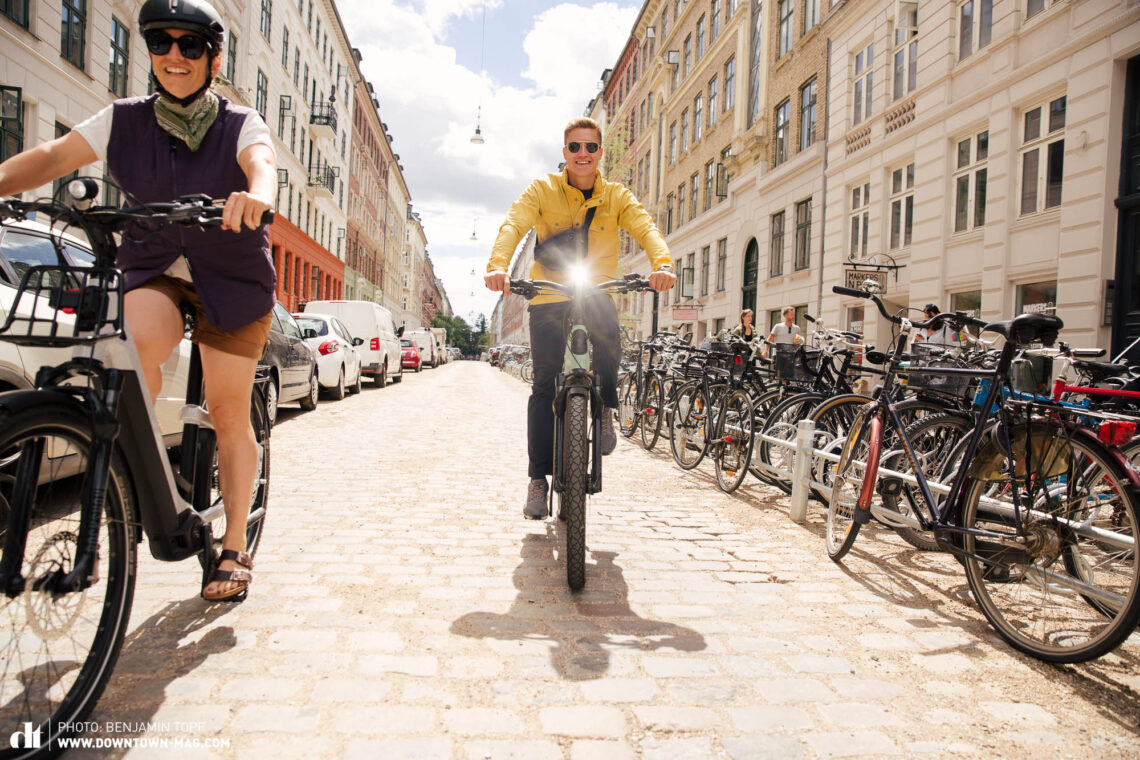

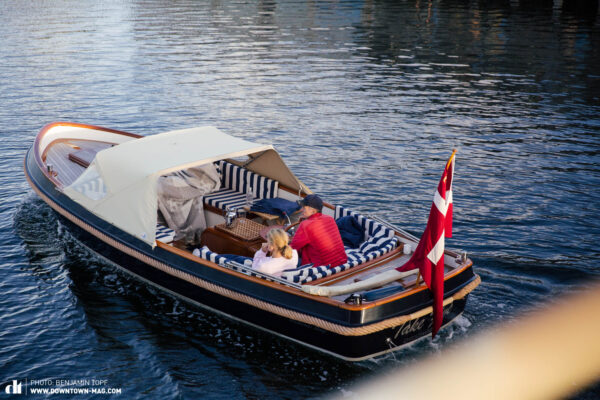
First up is the German-born Ricky Buckenlei, who moved to the city to join the hip, Copenhagen-based cycling apparel brand Pas Normal Studios in January 2022. She’s just had her second child and – astonishingly for us as Germans – even signed the contract with Pas Normal while pregnant, a feat that would be off the cards in Germany, especially for women looking to get into managerial positions. Denmark is very relaxed around parenting; there’s no either–or when it comes to career and kids – just take both. We do a quick ride around Nørrebro and pull up at the Superkilen park, which is split into three sections including the very ‘grammable red floored part and a distinctive little hill that’s a hit with kids (and adults) on skateboards, on foot or two wheels. Ricky, with her youngest daughter in tow, orders a cappuccino at Coffee Collective, explaining how that as a German she has had to shake off some of the more rigid mentality that she grew up with and try to embrace the more laidback Danish approach to life. What really struck a chord with Ricky is how trusting the Danes are – they have confidence in the innate goodness of people. Their approach to the pandemic highlighted this, with the politicians expecting (rather ordering) the population to act in everyone’s best interest.
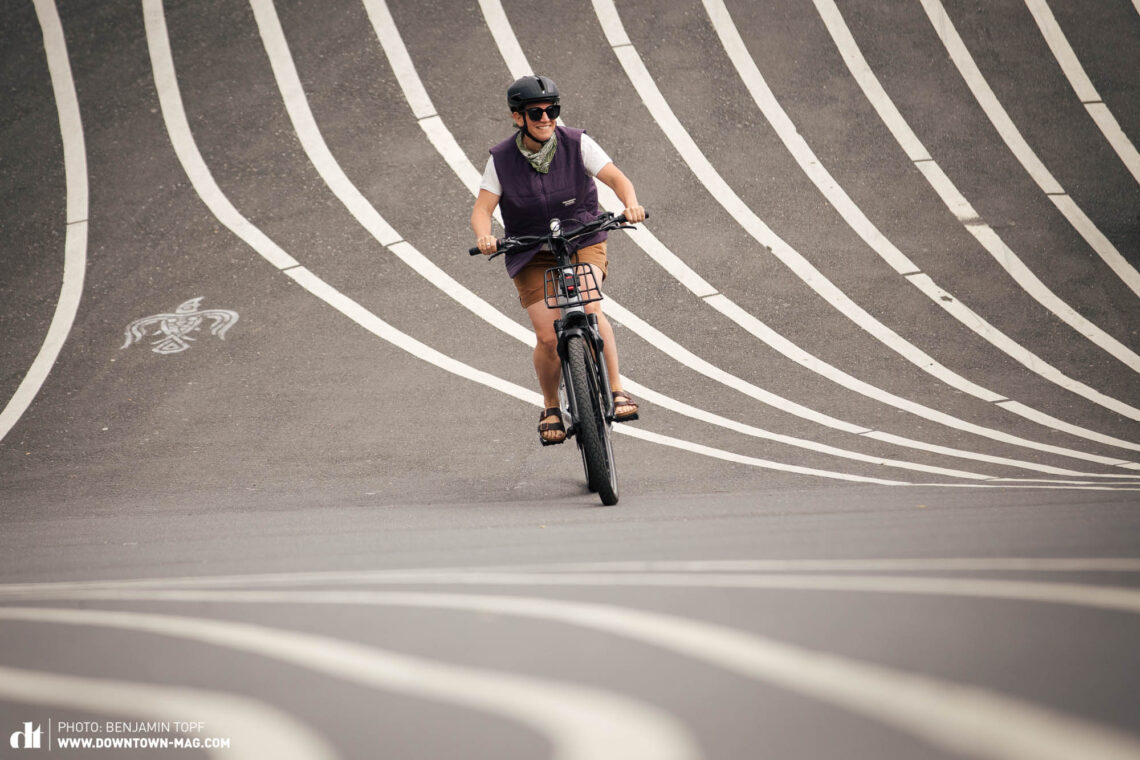
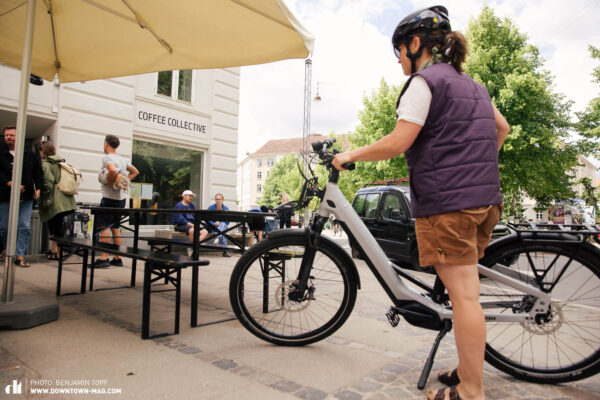
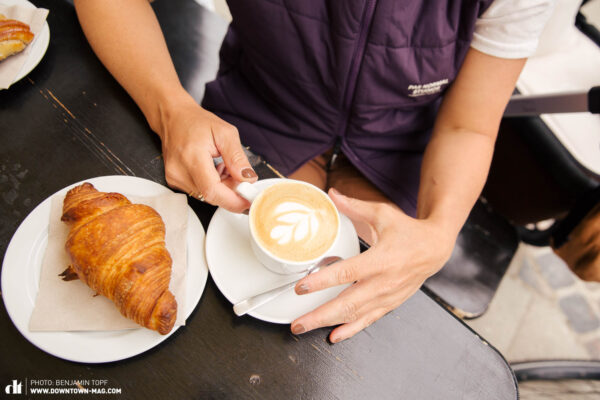
She also touches on something we can’t help but notice: the cleanliness, the sense of security, and the distinct lack of paper. Whether at the doctors or the authorities, it’s all digital from check in to prescription pick-up. The same ID number you’ll use for hospital visits also lets you check the status of house purchases, your child’s medical history, vaccinations and the rest. However, there’s also privacy where needed, so banks and insurance companies and the like can only see the area/s that relate to them. Tax is done automatically. Sure, you’ve got to trust that it’ll work, but the general consensus is that this system is better than any data held on paper.
Stealthily cool is the best way to describe the Copenhagen style. It’s a minimal aesthetic with muted tones of blue, white, black and grey, and perhaps a touch of colour or some accents so that it lands in the understated camp, rather than the boring one. Throw on a vintage piece if you’re feeling courageous. There’s something in the genetic background of Danes that’s made them taller (and arguably more good-looking) than most of the rest of the world, but the effortlessness and ability to look so chic and casual without any outward signs of having had to work hard is not something we can pin down on DNA. Being well-dressed, we learn, is a sign of respect; say, you’ve been invited to a party, you take a bottle of fizz and your best party outfit – that effort gives the occasion a certain value. It’s nice, but it does make us Germans feel a little underdressed.

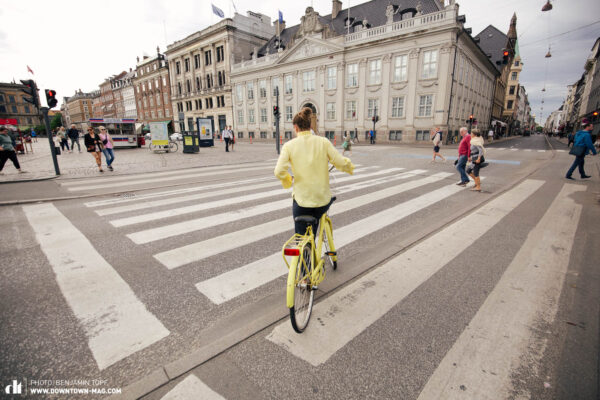
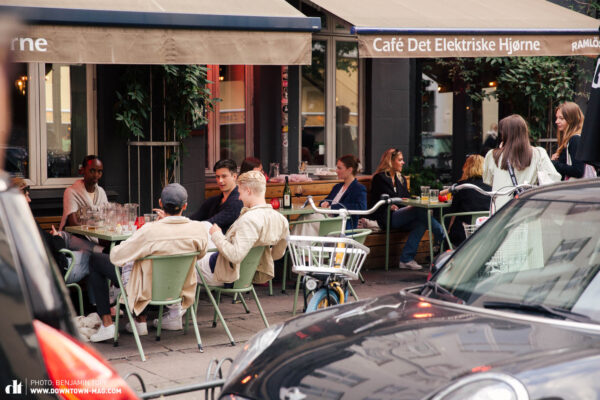
One cappuccino turns into three before Ricky needs to get on with real life. Her closing tips: avoid the pedestrian zones, drift through the city, go to the beach (there are so many), or take some public transport along with your bike and go for a bikepacking trip, perhaps to look for all of the Hidden Giants.
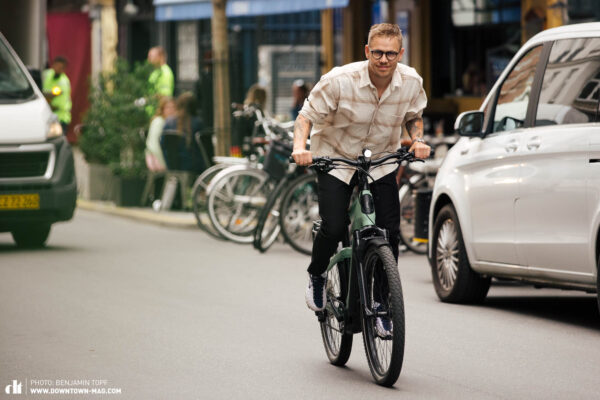
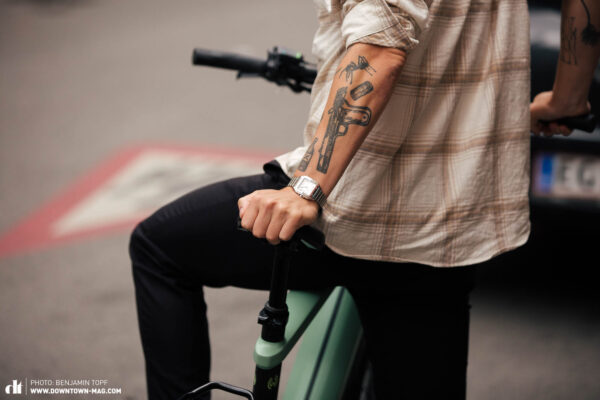
Marc Simonsen is another Copenhagen resident with time for a chat and quick bike ride. The business developer works at Slow, a company that’s trying to make the world a little bit better through fairly produced coffee. As we follow his wheel along the bike paths, he swings wide to avoid tourists on easily recognizable hotel rental bikes, adding that it’s the tourists and couriers that worry him the most. The first because they don’t know the rules, the second because they know them but choose to ignore them. Marc is typical for Copenhagen in that he’s also a bicycle native, having grown up riding and understanding intuitively how things work. The stream of bike riders here are like an invisible current running through the city, like a shoal of fish instinctively flowing forwards in a way that’s able to avoid harm and collisions. He points out some e-scooters being ridden by tourists, noting how they can upset the balance when ridden carelessly against the current.

Speaking of balance, Marc explains how Copenhagen’s bikes are balanced out by its thieves, with more than 100 bikes reported stolen each day. For some locals with characteristic Danish nonchalance, having your bike stolen is just something to brush off and you can simply grab the next unlocked bike you spot and ride onwards. We won’t take any risks with our high-end WINORA e-bikes and would selfishly like to continue riding them rather than throw them into the city’s unregulated circular bike economy. At regular intervals the authorities make an effort to clear bike racks of unused bikes by stickering up all the long-unattended frames. If yours is one of these, you can reclaim it by taking off the sticker and moving your bike home – if not, it’ll be collected for auction.
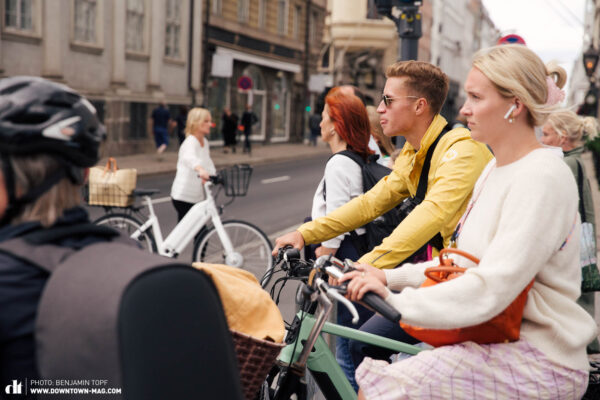

Marc goes on to explain how the Danes abide by an unwritten code of conduct known as the Laws of Jante, which go back to a novel written by Aksel Sandemoses in 1930 called A Fugitive Crosses His Tracks. In the book, he writes about a Danish town with 10 unwritten social codes for the population, with the main idea being to not think you are anything special.
You can see how these rules play out in the way there’s such a heart-warming lack of ego in how Copenhagen does business, the way Danes do design, and the number of start-ups and co-working spaces. If you are looking for status symbols, you might catch sight of some high-end watches, but the silently enforced cultural values from the Laws of Jante means that Danes won’t be showing off—even if they have treated themselves to something sharp. The general culture across not just Denmark, but the whole of Scandinavia, is pervaded by the sense of upholding equality by considering each other’s feelings and showing respect, not showing off.


By now, we feel like we’ve had a real education on Copenhagen, so we head over to Nyhavn, bypassing the crowds in front of the charmingly colourful harbour and grabbing a hot dog and chocolate milk from the Seven 11 instead. Along with a lot of other twenty-somethings, we sit on the edge of the harbour and ponder what we’ve seen so far.
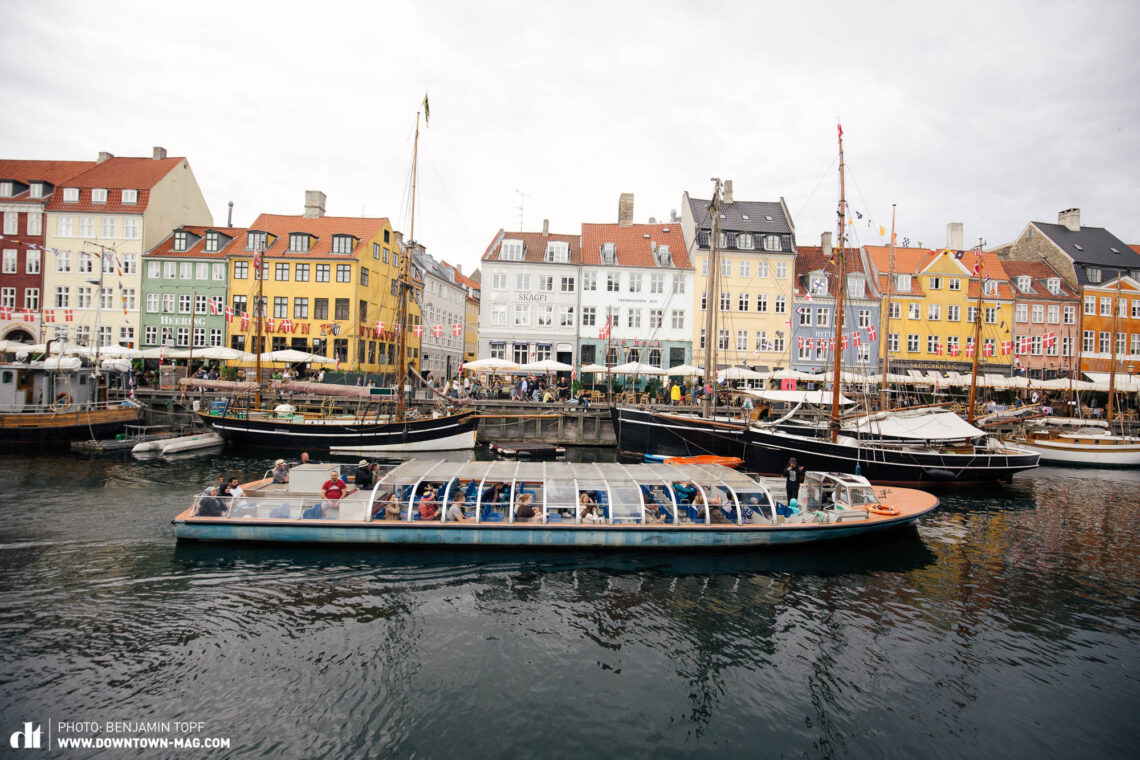
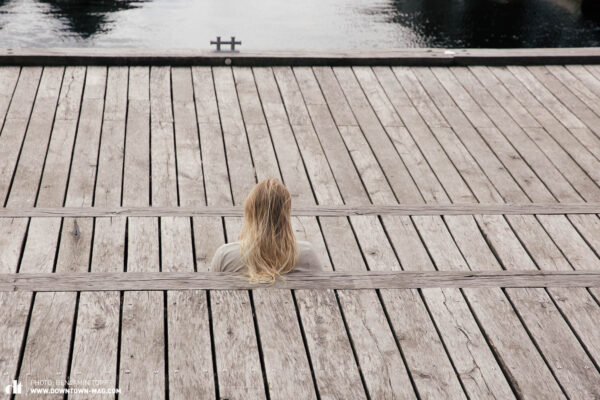
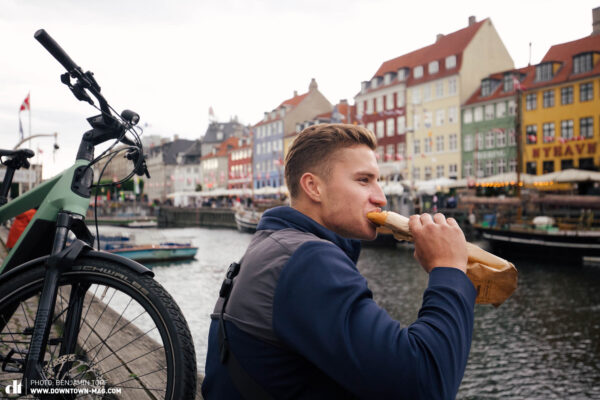
Unlike other cities, Copenhagen is a capital that takes its foot off the gas. Do the same, let yourself go with the flow, admire the architecture, and practice being nonchalant like the Danes. Once you’re done trying to master the art of nonchalance, grab something tasty to eat, find a spot on the waterfront and see who you make conversation with. Drink ice-cold chocolate milk and fall into step with the city’s rhythm. Shift down a gear, show tolerance, have fun. If you want to do hygge, this is it.
3. By bike and breathless across the city – A European bike capital that’s not for beginners
Those of you who grew up in a city where cars dictate the pace will quickly realise that bikes are the only sensible way to move around here. It’s not even up for debate. If you need a motor, make it an e-bike.

As we weave across the city on our first ride with locals, it’s apparent just how intrinsic bikes are to daily life here. It’s a city of bicycle natives, all attuned to the various modes of mobility that follow their own curious logic. Lanes for pedestrians, lanes for those on bikes, and lanes for cars — but these are at the bottom of the priority list. All the lanes run parallel, artfully intertwined with traffic lights that maintain order, largely successfully. For those who weren’t born and raised on a bike (or in the hold of a cargo bike), you will have a steep learning curve and do as those before you do, hoping that it goes smoothly — and it should, mostly.
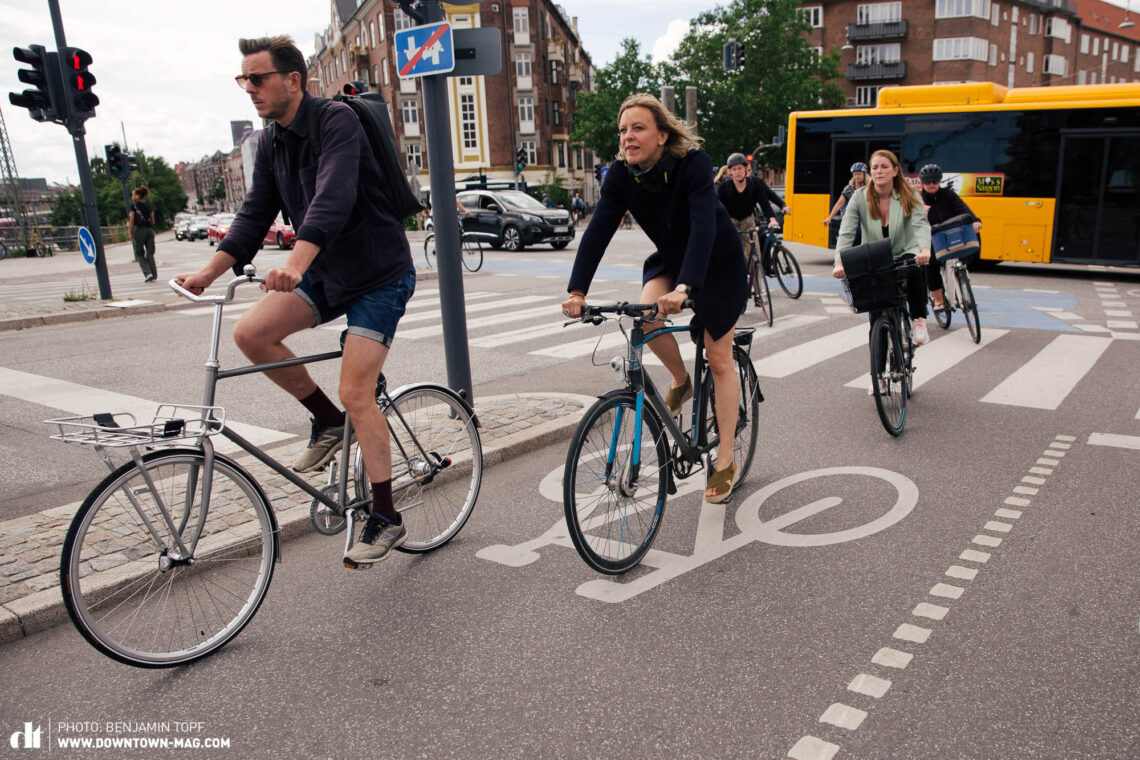
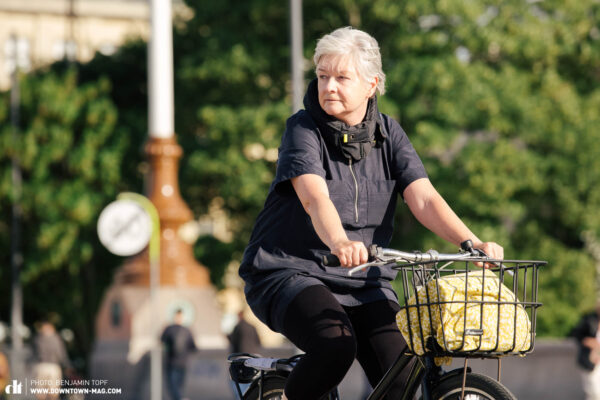

All genders, all ages, parents and kids, tourists, businesspeople, and even the Royal family – it feels like the whole city has a pair of wheels here. Having so many people on bikes lends the city an even more laidback vibe; it slows the traffic down and puts it on a human scale. This bike culture has largely erased the anonymity that people have when sat behind the wheel, which makes life seem calmer and fairer. Although we should mention that rush-hour is still rushed, albeit on two wheels. Stay alert, follow the rules and try not to collide with fellow tourists.
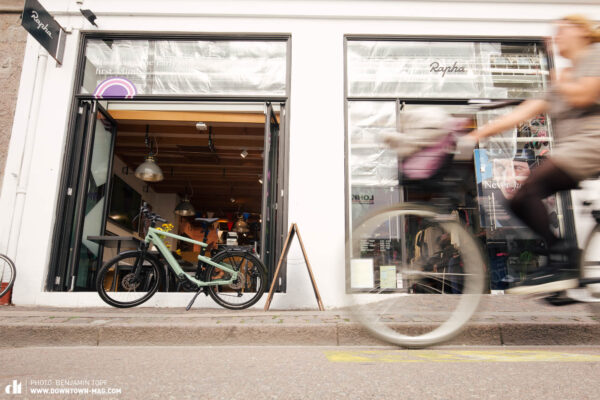
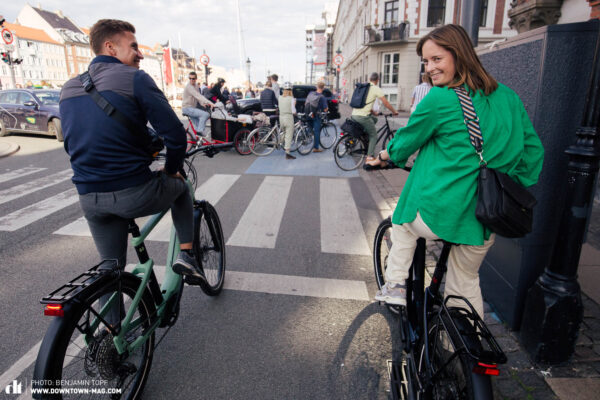
We’d agreed to meet Caroline, a student who works part-time at the Rapha Clubhouse, something of a mecca in Copenhagen (and other big cities) when it comes to stylish riding apparel, good coffee and the chance to mingle with like-minded people. She leads us out of the city as dusk is falling, passing the artificial island of Christiansholm in the harbour. The city is in the process of shaping its newest district, called Paper Island. Over the past 300 years, it first housed a military hospital, then was repurposed for storing coal and paper, hence its name today. The redevelopment project is being driven by the award-winning Cobe Architects who are describing it as a ‘blue urban living room’.
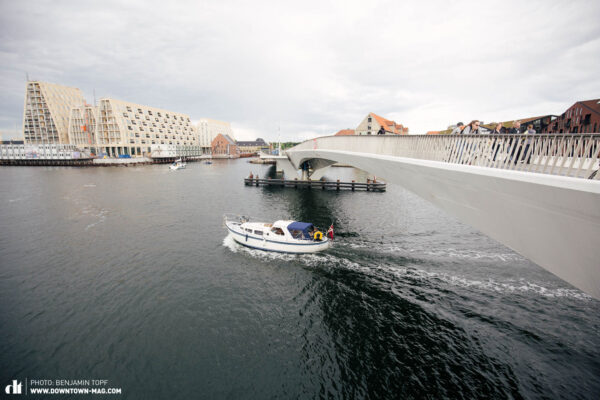
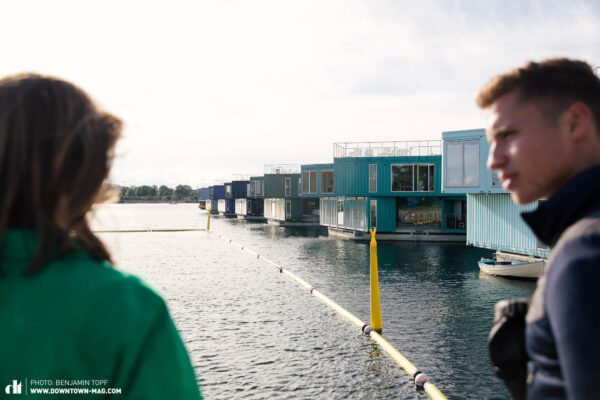

After more water and more bridges beneath our tyres, we spot the military boat on the horizon that guards the royal residence. Further on, we pause to admire the stylish student accommodation at Urban Rigger. While there’s no actual swim-in, swim-out access, the residents are fortunate to have a public harbour bath right next door, which is open 24/7 all summer long. It’s one of the city’s many protected lagoon-like pools inside the actual sea, where the water quality is tested daily. Having spaces like this within walking distance of home make us wish we were still students, but before we dwell on our age, we ride on to La Banchina, a lesser known bathing spot with a sauna, which makes it the ideal spot for dipping in the water all year round. We order an organic Copenhagen-style Aperol Spritz from the bartender and take it down to the water’s edge. Caroline is busy explaining how the state supports students with up to € 800 per month, regardless of their parents’ income. What’s expected in return is that each student has a compulsory job of at least 11 hours per week that’s covered by social insurance. Growing up in Denmark clearly has its perks …
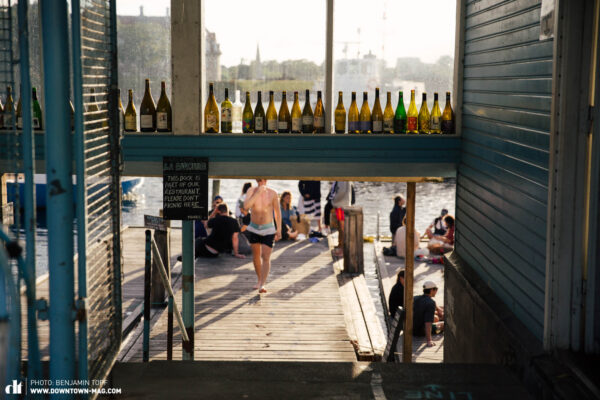
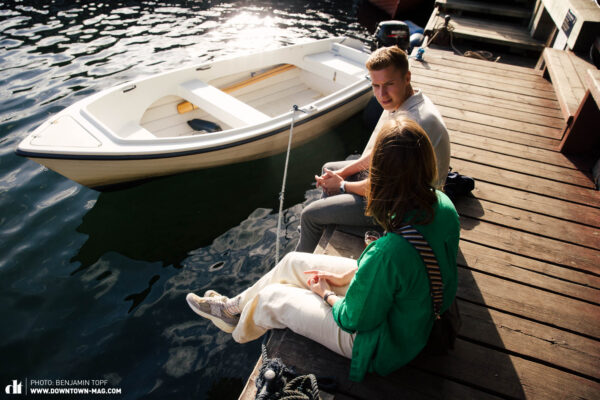

Partway through her degree Catherine had travelled around Asia but is now pleased to be back in the city that she tells us excitedly is ‘perfect’ for her. One thing that she appreciates most is how safe she feels as a woman. It’s a liveable city, she explains, one that’s not so big you feel like no one knows anyone; instead there’s always something happening. ‘Even though you could describe it as hygge – and by that I mean, with the typically relaxed Danish vibe,’ she laughs, ‘it’s anything but provincial.’
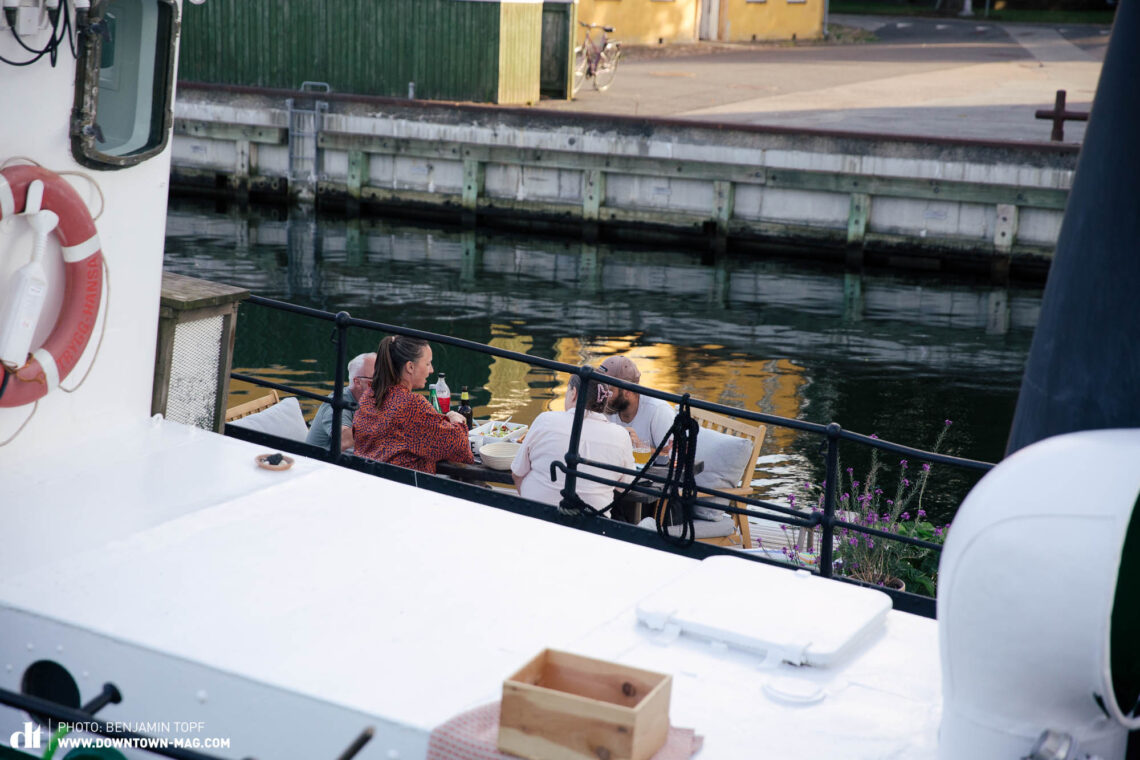
Heading back before dinner at Pluto, we roll along the harbour, admiring the houseboats and trying to digest all the surprising sights we’d seen on our e-bikes. We were learning that all you need to do is get on your bike and you’ll cover any distance in Copenhagen much quicker than in a car. And finding a parking spot directly in front of your chosen restaurant? No stress.
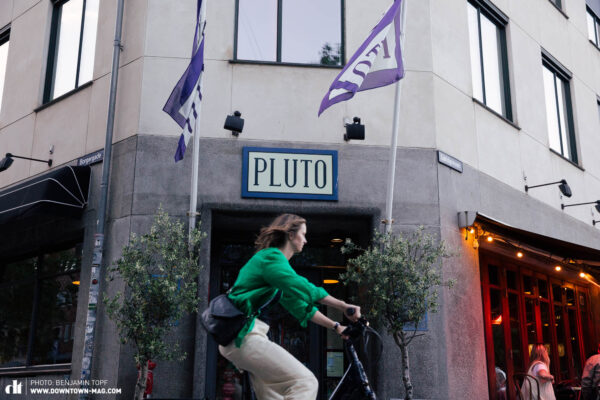
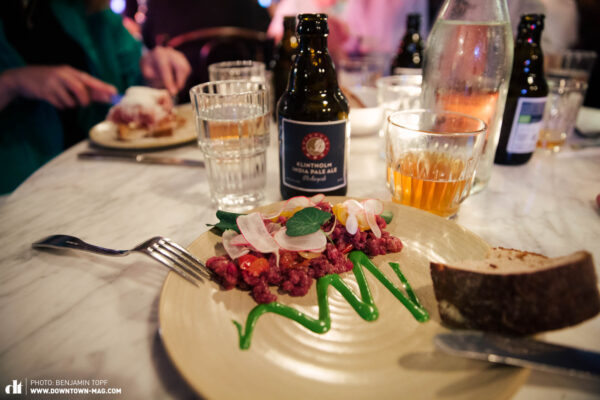

The more you ride in a city, the more you’ll wonder how to carry your cargo if you’re not taking a car – that’s why the city’s signature Christiania Bike came into existence in the 1970s, sparked by an energy crisis and created by residents in Christiania. What initially began as a tool just for a select few in the free state, quickly caught on and became a big success – these days, it couldn’t be more on trend and generations of Copenhagen kids have grown up with it.

The benefits to riding an e-bike in Copenhagen are many, especially if you – like us – decide to slot a beach trip into your agenda. We load up the bikes and ride in the direction of Amager beach, which is blissfully quiet when we get there. After a quick swim, we’re directed towards Ismageriet, a 1950s-style ice cream parlour with a fantastic reputation that does not disappoint. Liqourice is everywhere in Denmark, so we felt obliged to taste it here too.
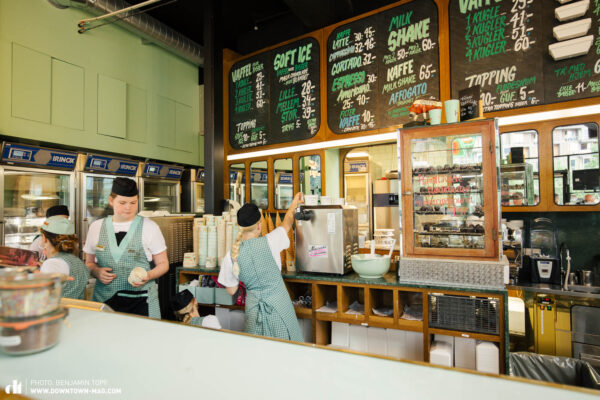
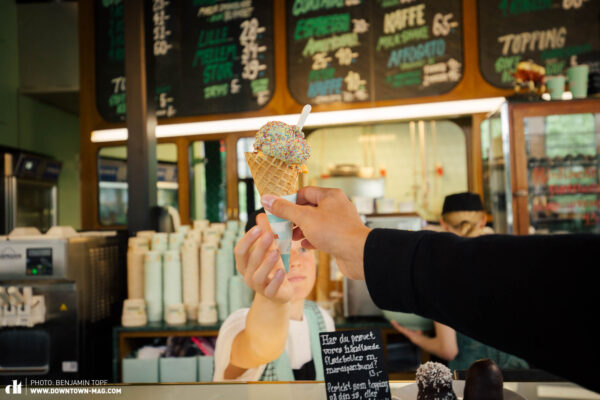
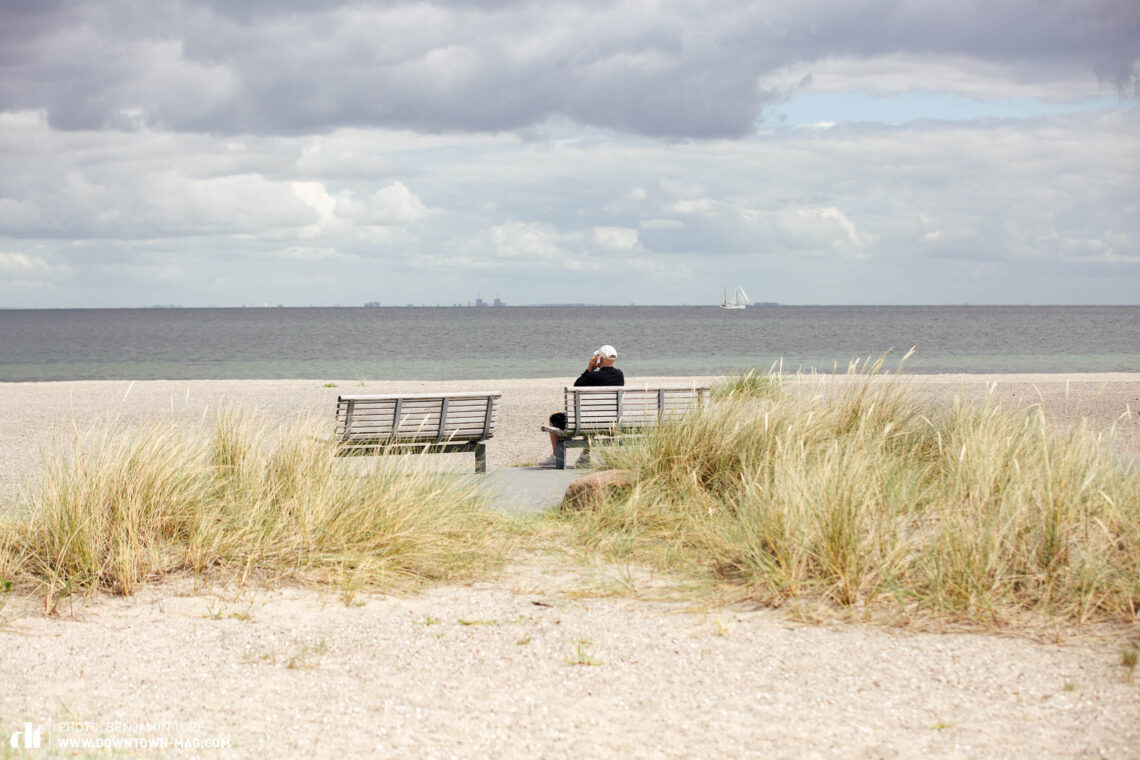
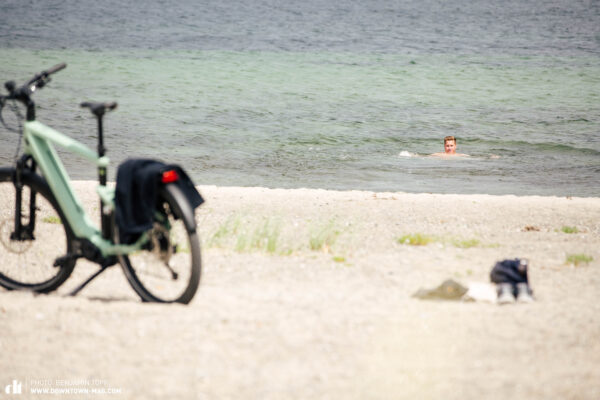

Freedom-finding, health-giving, crowd-escaping; we know from experience in other cities just how good it is to move around by bike, but Copenhagen takes it to another level. It doesn’t just have bike lanes, it even has entire bridges exclusively for bikes, high-speed bike routes, and no shortage of bike parking. Oh, and did we mention that without a bike, you might feel slightly out of place?
4. Paris of the North – Why is Copenhagen so damn cool?
Despite being more than 1,200 km further north, and significantly colder in winter, Copenhagen exhibits as much class as you would expect in Paris. But where does this air of sophistication come from? The people? The architecture? The attitude that’s equal parts streetwise, equal parts savoir-vivre?
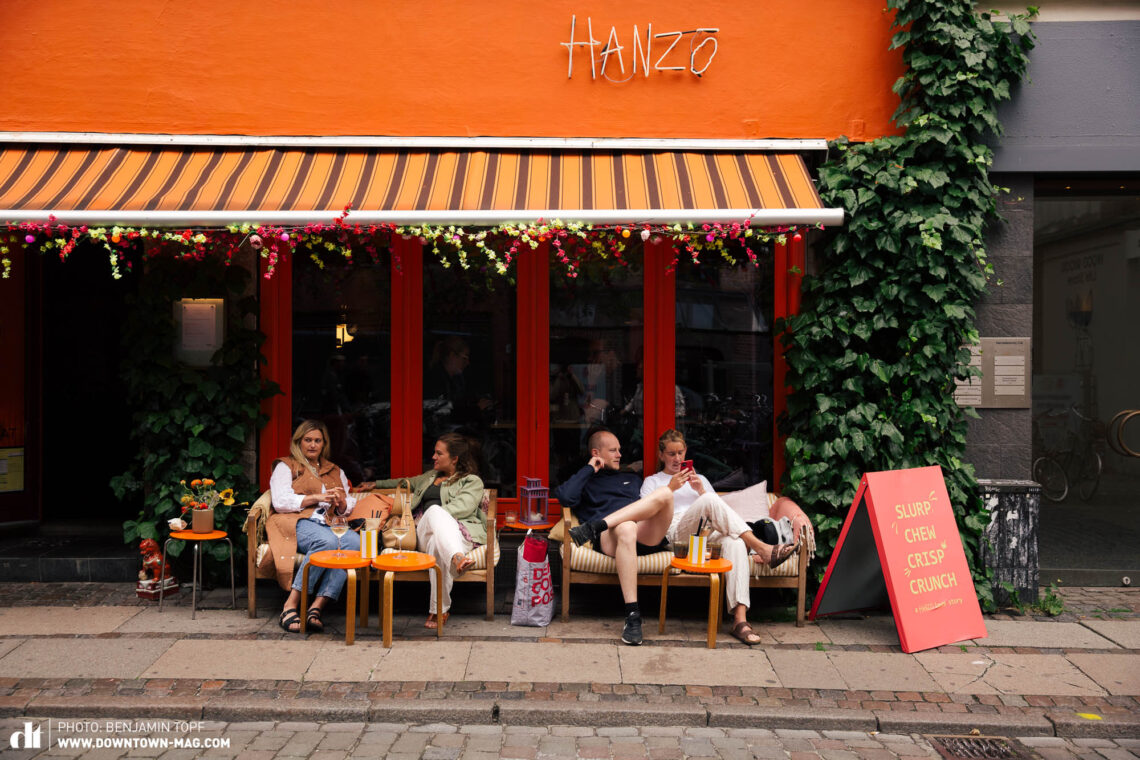
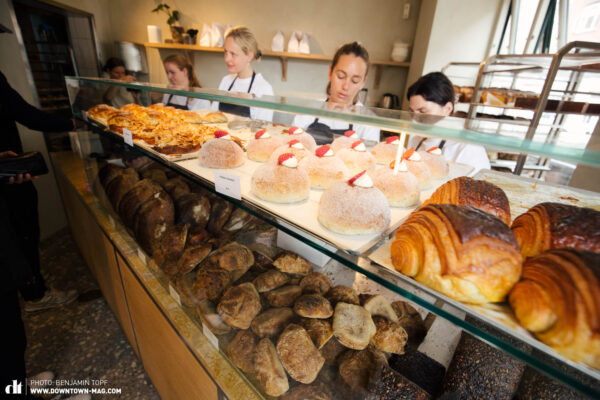
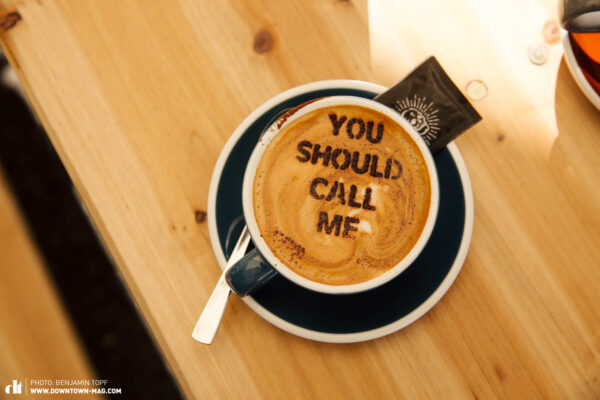
When it comes to good coffee and buttery smooth croissants, we’ve rarely experienced the level we found in Copenhagen – Paris, excluded. We found a city that was full of dozens of good-looking people sitting outside good-looking cafes, eating good-looking dishes and reading good-looking magazines – all without even trying to look good. It’s quite disarming, as it’s the sort of image that you’d only otherwise see in Paris. Perhaps that’s why it’s not so strange to learn that even back in 1864, the author Theodor Fontane described Copenhagen as the Paris of the North.
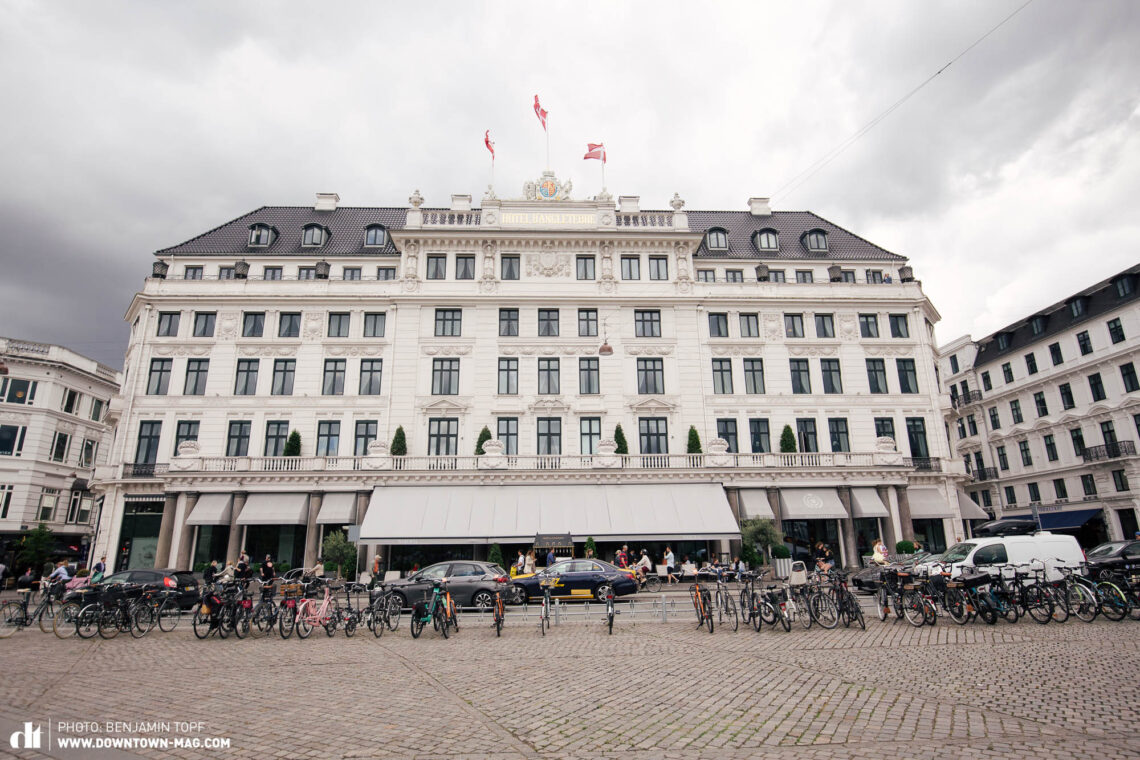
Design as a matter of course
To understand the residents of Copenhagen, you’ve got to look at how they build. From waste incineration plants to bridges, blocks of flats to cultural centres, here’s where reputable architecture firms want to leave their mark. One such example is BIG, founded by Bjarke Ingels, a firm that goes for conceptual designs that spark harmony between the users and the environment. If riding around the city spotting striking designs is your thing, expect to see something radical every 100 metres or so. We’ve collected a list of what caught our eye from the saddle.
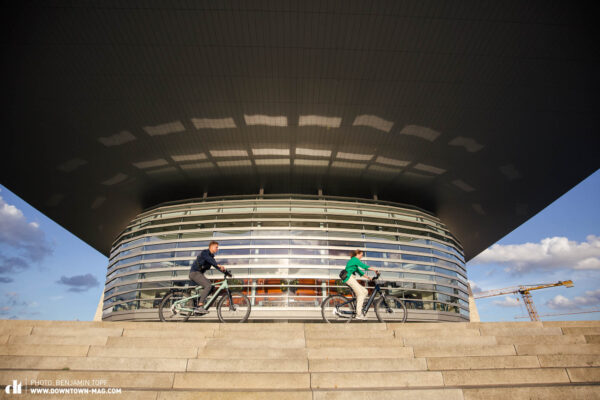
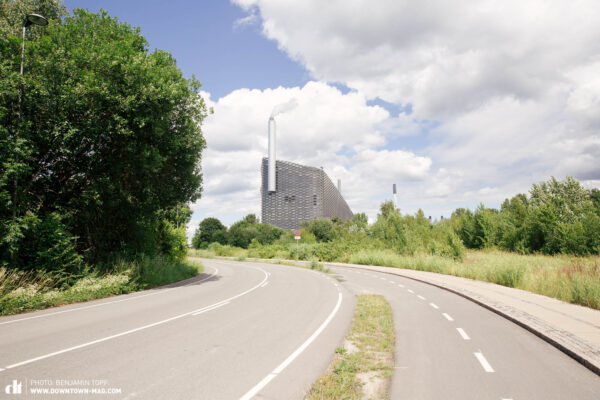
CopenHill – A waste-to-energy plant with bonus ski piste
Being tall isn’t exclusive to the Eiffel Tower. Over in Christianshavn, there’s a place called CopenHill, a ski piste on top of a waste-to-energy plant that opened in 2017 and is visible from virtually anywhere in the city. Around 100 metres tall, it slopes down for 450 metres, decked in artificial, ski-able grass. You can get to the top on foot or by lift, then go down on skis or sledge. On the ground floor there are ski rental facilities and a shop that could easily hold its own in any Alpine ski resort. Once you’re skied out, head to the roof-top bar for apres ski. What else? There’s also an 85 metre-high climbing wall, and a lift which is entirely made of glass that runs straight through the waste incineration facility.


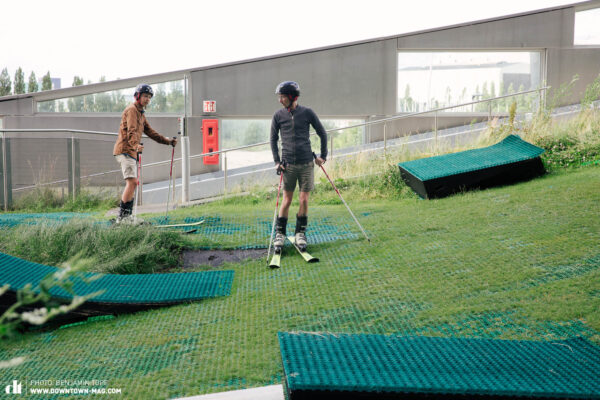
By integrating functionality with a skiable–hikeable–climbable roof, the architects at the Bjarke Ingels Group have succeeded in helping to shift public perception around waste-to-energy power plants and set a new tone for industrial areas; it’s a concept that BIG have dubbed ‘Hedonistic Sustainability’, architecture that’s not only better for the environment, but also more enjoyable for its citizens. Formerly known as Amager Bakke, this project is helping Copenhagen towards its goal of being the world’s first CO2 neutral capital city. In 2021, it was awarded one of the most prestigious prizes at the World Architecture Festival, too.
Black Diamond – A treasure trove for books
A cubic extension to the Royal Library, Den Sorte Diamant aka the Black Diamond (named due to its black granite material) sits on the Copenhagen waterfront in the heart of the city, casually reflecting the sun and capturing people’s attention with a glass façade that appears almost as one with the water. Once inside, you’ll be attracted to how it connects the old and new libraries by a bridge and balconies that seemingly float. Designed by the Danish studio Schmidt, Hammer & Lassen and completed in 1999, there’s around 160 km of bookshelves within the library, which makes it the biggest book collection in Northern Europe. Oh, and look up – the artwork on the ceiling by Per Kirkeby is stunning.
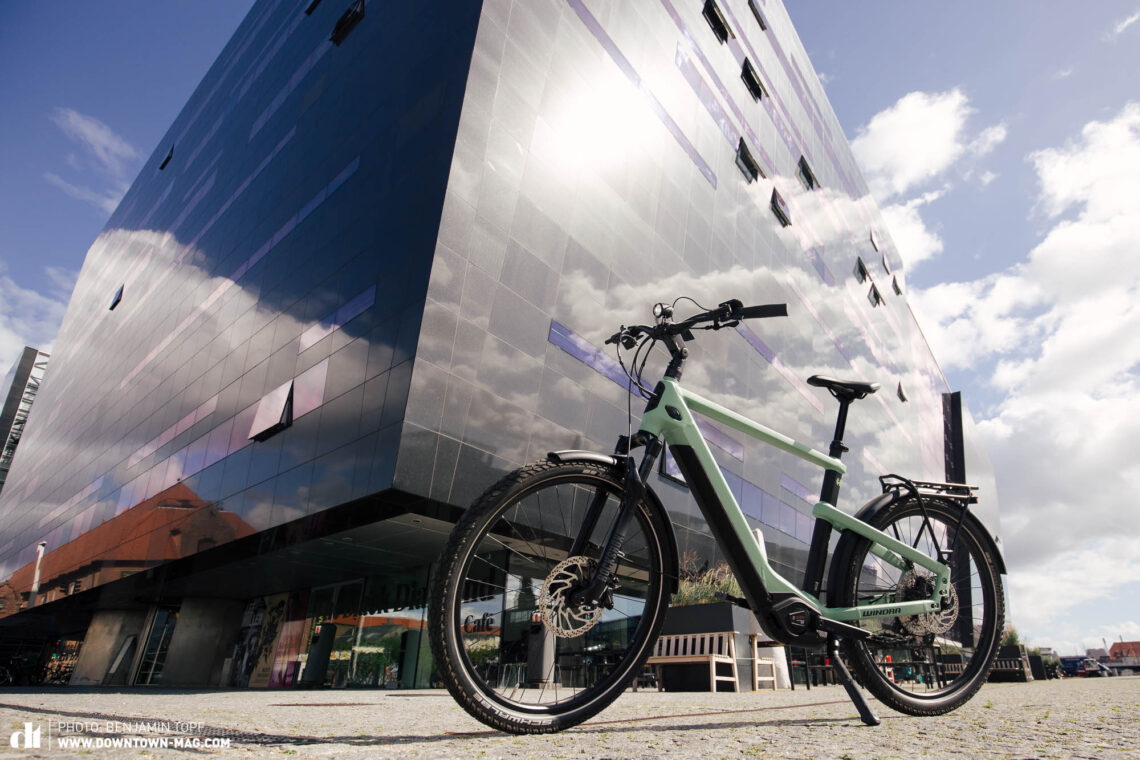
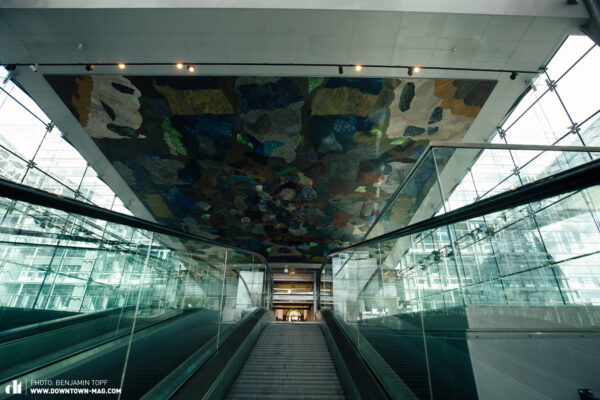
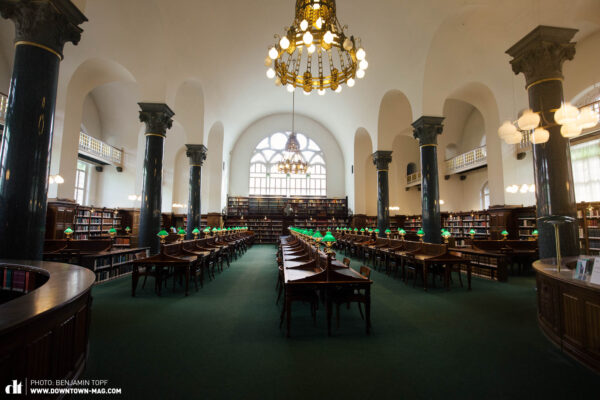
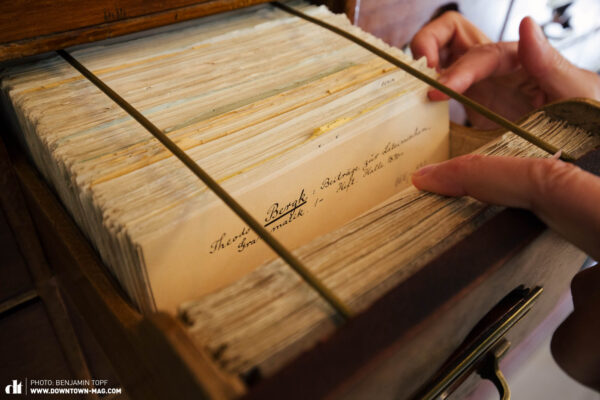

The Royal Opera – Put a lid on it
Sitting directly opposite Amalienborg Palace, this neo-futuristic building was built in 2004 by architect Henning Larsen and funded by a Danish shipping magnate with the stipulation that Copenhagen gets a world-class opera. The roof is its most obvious distinguishing feature, spanning 160 x 90 metres, which makes it one of the biggest in the world and even bigger than a football pitch. The constructors took cues from high-tech bridge engineering to create this technically impressive feature. There are nine stories above sea level and five under the water, totalling 41,000 square metres. No expense was spared for the interior either: it’s clad in yellow Jura limestone from Southern Germany, while the floor in the foyer is made from Sicilian marble. The ceiling in the main hall is decked with 24-carat gold leaf – in total 1.5 kg of gold covers the ceiling.
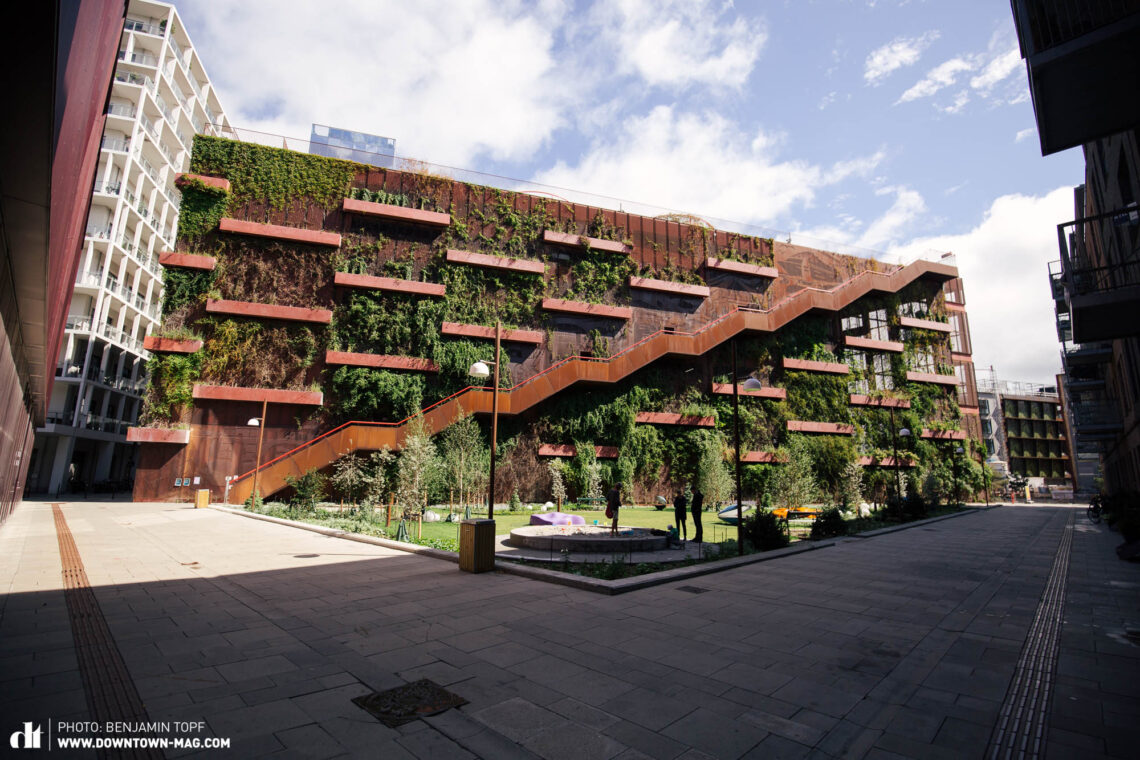
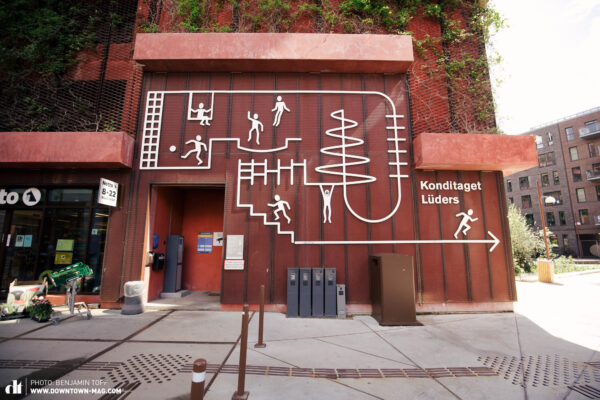
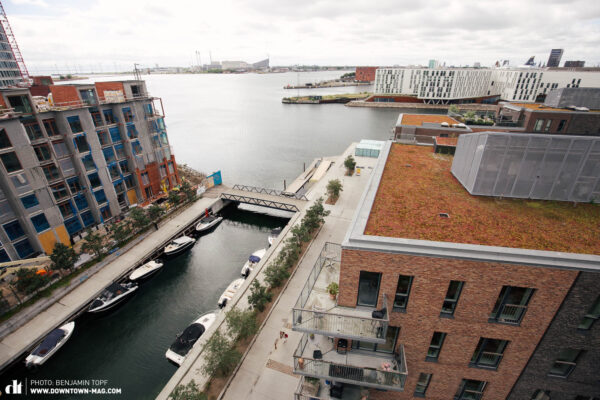
A multi-storey car park with roof park and fitness trail
The next architectural delight is perhaps one of the most banal destinations in any city, but Copenhagen has succeeded where others have failed… Yes, this is a multi-storey car park. But with a twist. Local to the city, JAJA Architects included a huge kids playground on the top of the eight storeys, adding masses of value to the Nordhavn neighbourhood. There’s an external staircase leading straight to the roof in a very Pompidou-esque style – and you can even press a button at the bottom to race up the steps, which makes it a hit with fitness fans. Up top, kids can play until their heart’s content (or dinnertime, whichever comes first) while whoever is doing childcare can gaze out over the new district of Nordhavn. The city is clearly onto something with the idea of buildings having a secondary usage; the park is busy, even in winter and there’s always someone to chat to on the roof or the steps.
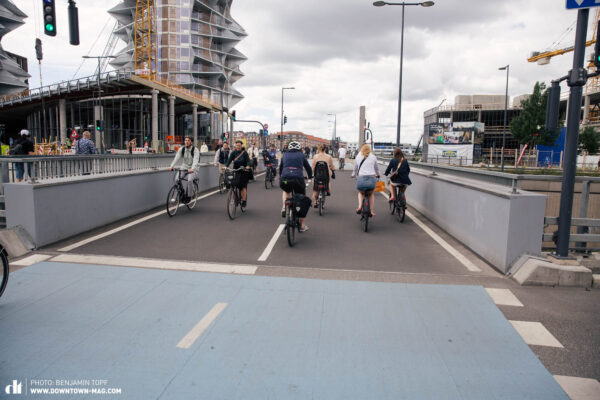
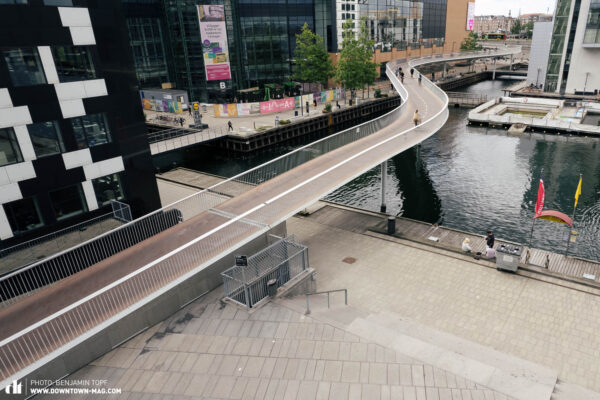
The Bicycle Snake – A bridge for bikes only
There are multiple bike bridges in Copenhagen but our favourite has to be the Bicycle Snake, a red-floored harbour-crossing winding snake that brings an extra smile to the already satisfied cyclists in Copenhagen. 230 metres in length and just 5.5 metres in elevation, the bike-exclusive bridge is found in the Havneholmen neighbourhood, designed by the international Copenhagen-based Dissing+Weitling. If you’re on foot, use the parallel bridge and we’ll all avoid any confrontation.
Copenhagen Fashion Week
It’s no secret that the Danes get fashion, which is what has made Copenhagen Fashion Week such a staple on the catwalk calendar as the best showcase for Scandinavian style. Taking cues from architecture and playing around with form and fabric structure, turning what we wear into self-standing designs, there’s a lot to digest when it comes to the fashion scene here. The good thing is that it’s not all sky-high prices – if you’re lucky you’ll be in town when there’s an archive sale on. Check out Wood Wood, Ganni and Samsøe for timeless Scandi style.
Shops
ARKET Store – stylish and affordableMøinichen Mansion | Købmagergade 33 | 1150 Copenhagen
arket.com
HAY House – Interior design pieces that’ll look good in any homeØstergade 61, 2 | 1100 Copenhagen
hay.dk
Illums Bolighus – a temple of homeware from Danish and international designsAmagertorv 10 | 1160 Copenhagen
illumsbolighus.com
Paustian – classic, contemporary, and even wild designer piecesNiels Hemmingsensgade 24 | 1153 Copenhagen
paustian.com
Magasin – The Galerie Lafayette of CopenagenKongens Nytorv 13 | 1095 Copenhagen
magasin.dk
Little Paris – a cute little street in Vesterbro with flower shops, cafes and hotelsVærnedamsvej | Copenhagen
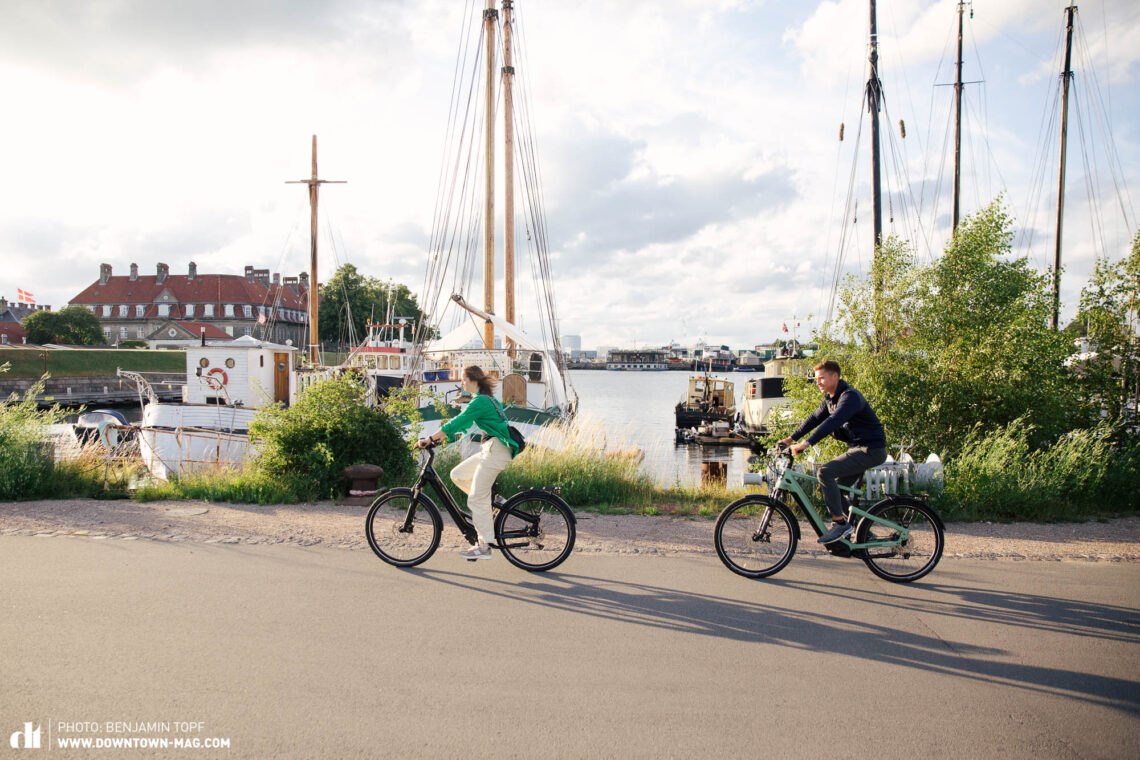
With cafes, fashion, design and architecture, Copenhagen can definitely hold its own against Paris. You might find French a little easier on the ears (although that depends how much you enjoy watching Nordic Noir shows), and you may also find that these locals are a little bit more approachable than their Parisian counterparts. Oh, and did we mention the coffee is great. #excusezmoiparis
5. Getaway Essentials – Hotels, Bars, Restaurants, Dos and Don’ts in Copenhagen
Bike-Shops
As bikes outnumber cars in Copenhagen, don’t be surprised to see there are seemingly more bike shops and rental hubs than petrol stations. Almost every hotel has its own rental fleet, too.
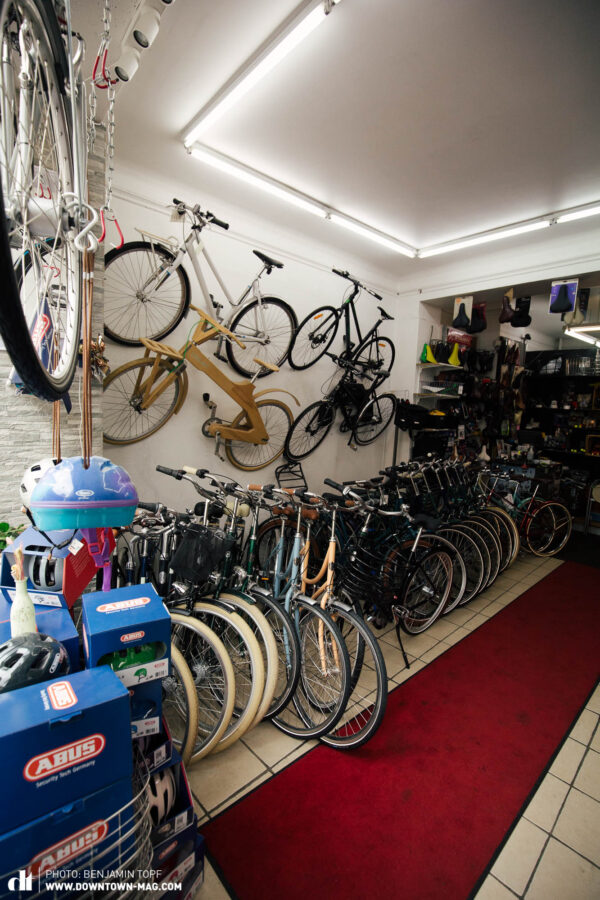
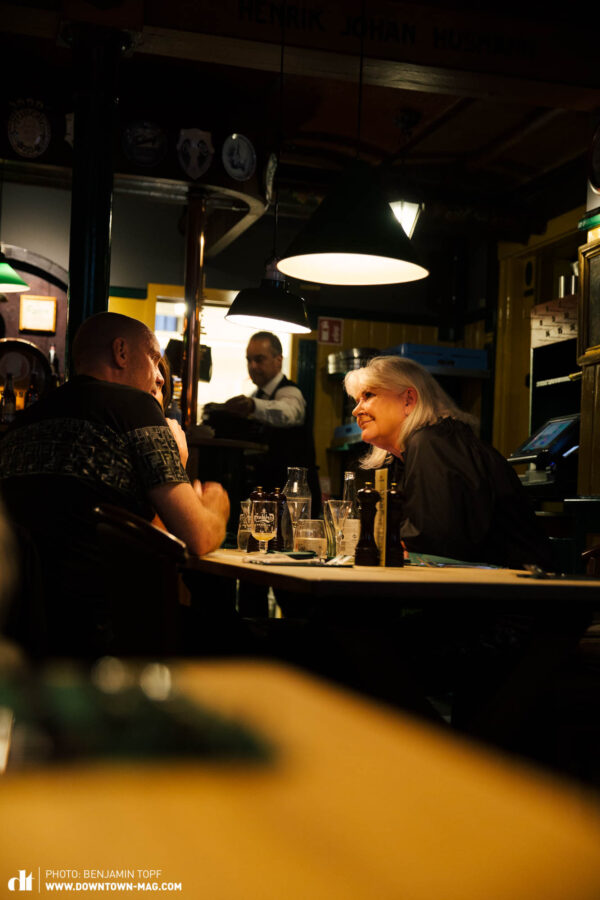
Where to sleep in Copenhagen?
Accommodation doesn’t come cheap in Copenhagen, so book in advance and trawl through Airbnb if our list of great hotels doesn’t take your fancy.
Manon Les Suites – a slice of Bali in the centre of CopenhagenGyldenløvesgade 19 | 1600 Copenhagen
guldsmedenhotels.com/manon-les-suites/
HOTEL KONG ARTHUR – decent standard, centrally locatedNørre Søgade 11 | 1370 Copenhagen
arthurhotels.dk/hotel-kong-arthur
IBSENS HOTEL – little brother of Kong Arthur, centrally locatedVendersgade 23 | 1363 Copenhagen
arthurhotels.dk/ibsens-hotel
d’Angletère – probably the most expensive hotel in CopenhagenKongens Nytorv 34 | 1050 Copenhagen
dangleterre.com
The Krane – awildly luxuriousSkudehavnsvej 1 | 2150 Copenhagen
thekrane.dk
Hotel Sanders – laidback luxuryTordenskjoldsgade 15 | 1055 Copenhagen
hotelsanders.com
Admiral Hotel – great location in a historic buildingToldbodgade 24–28 | 1253 Copenhagen
admiralhotel.dk
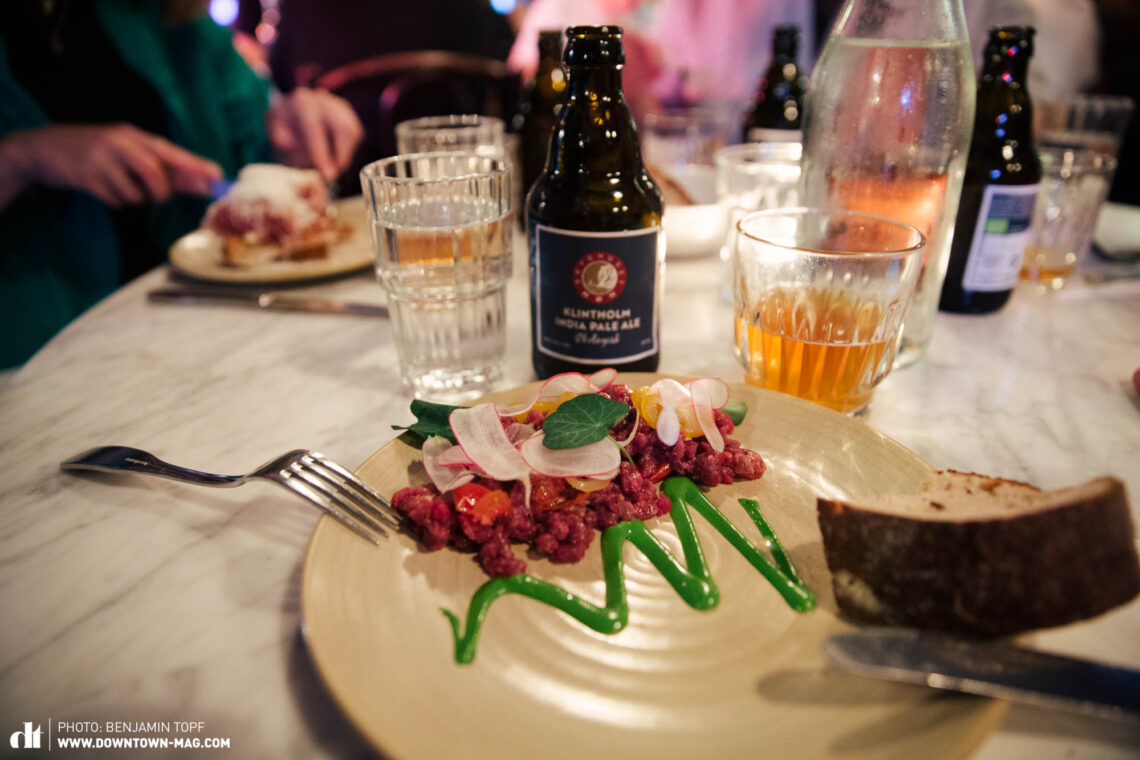
Where to eat in Copenhagen, from budget to blow-the-bank dining
Disclaimer: For time and money reasons, we haven’t tried all of the eateries listed below, but we have it on good authority from our local sources that they’re all worth it.
Pluto
Tapas-style small plates. Go for the 10-course ‘family style’ menu if you’re hungry and take your time over each delectable dish – apposite wine pairings optional. Think New York meets cosy bistro.Borgergade 16 | 1300 Copenhagen
restaurantpluto.dk
Noma
One of the world’s top restaurants with a waiting list that stretches for months, unless you’ve got the right number to call. Head chef Rene Redzepi creates 20-course menus that are basically unrivalled.Refshalevej 96 | 1432 Copenhagen
noma.dk
Husmanns Vinstue
Getting a table here without a reservation is a gamble—but it pays off. Enter the cellar of this typically Danish bar for breakfast, lunch, or wine. Ordering from their menu is easy; just tick the dishes on the notepad.Larsbjørnsstræde 2 | 1454 Copenhagen
husmannsvinstue.dk

Streetfood and co.
Broens Gadekokken
Centrally located street food market between Christianshavn and Nyhavn, brimming with high-end street food from established Copenhagen eateries—all of which have the gold Organic Dining Label and a massive range of different cuisine. Vegan burgers, tortillas, crepes, or even just a cocktail. Enjoy the view from the water’s edge and soak up the sunset. Come winter, this spot turns into an ice rink.Strandgade 95 | 1401 Copenhagen
broensgadekoekken.dk
Reffen – Copenhagen StreetfoodRefshalevej 167A | Copenhagen
reffen.dk
Gasoline Grill
A must-do. You’ll find the city’s best burgers at this petrol station. Expect to queue but it’ll be worth it.Landgreven 10 | 1301 Copenhagen
gasolinegrill.com
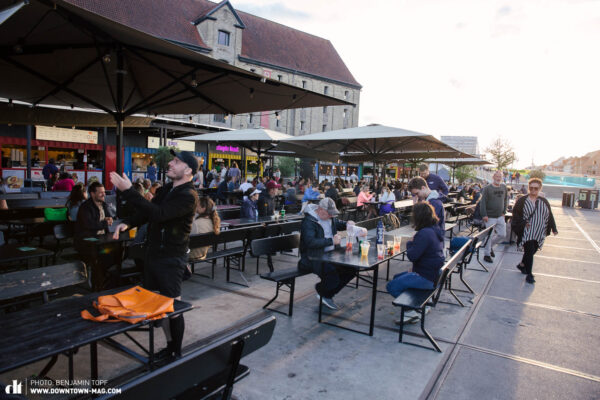
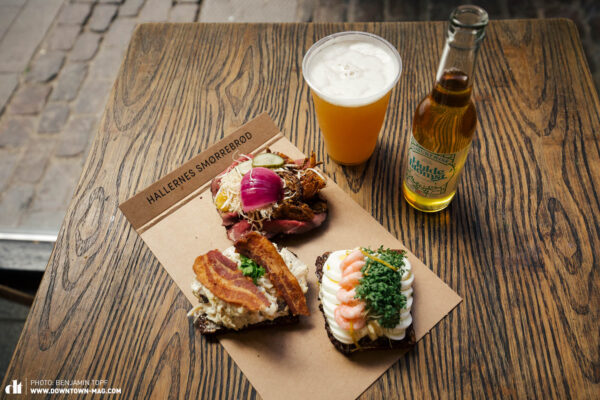
TorvehallerneKBH
More than 60 stands are inside this market hall selling fish, fruit and veg, coffee and chocolate as well as all sorts of Danish and international delicacies. Tasty tip: fish cakes and smørrebrød.Frederiksborggade 21 | 1360 Copenhagen
torvehallernekbh.dk
Meatpacking District
The hip neighbourhood of Vesterbro is saturated with cool bars, restaurants, and clubs inside former slaughterhouses; the cool kids love it here — and justifiably so. You’ll find whatever you fancy for dinner and it’s unlikely to break the bank.Fläsketorvet | Copenhagen
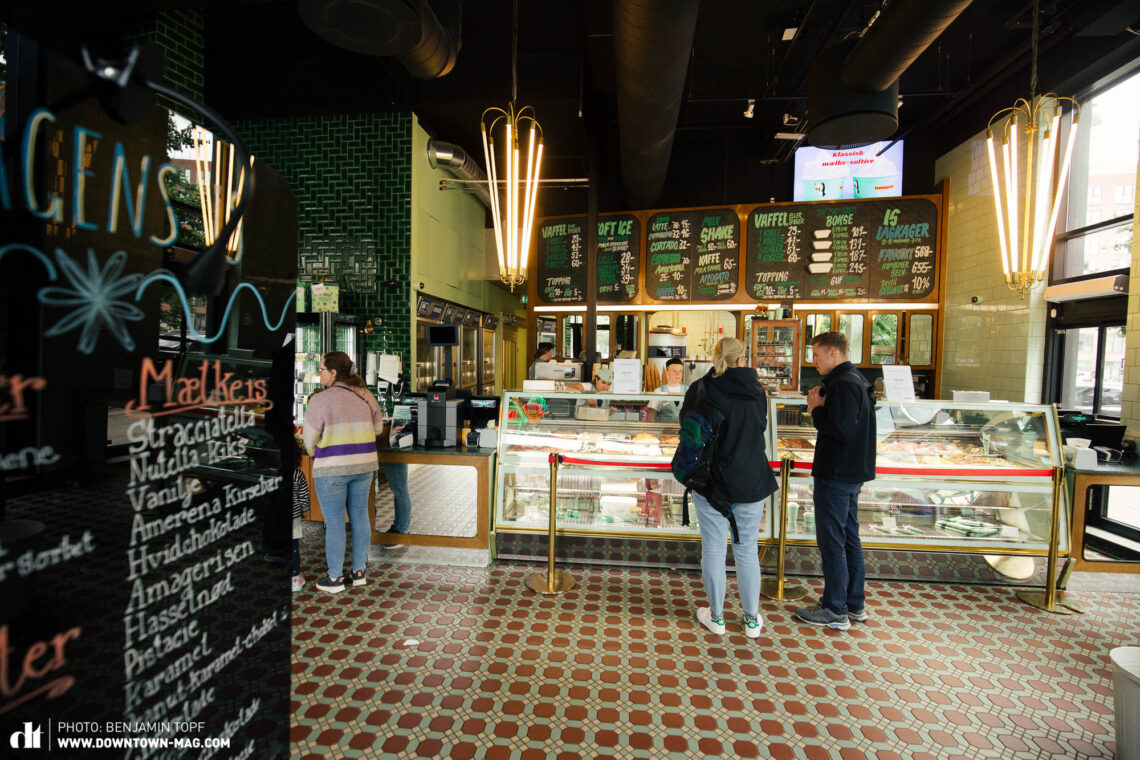
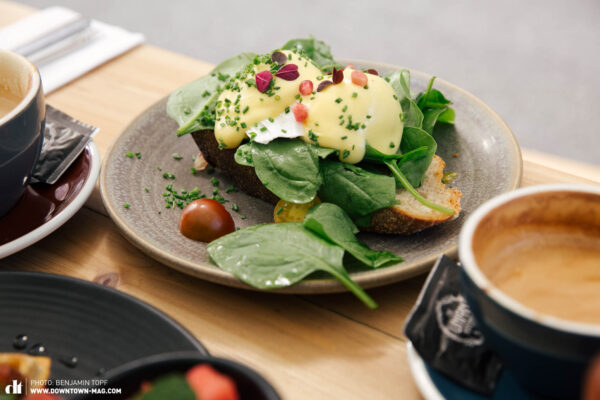
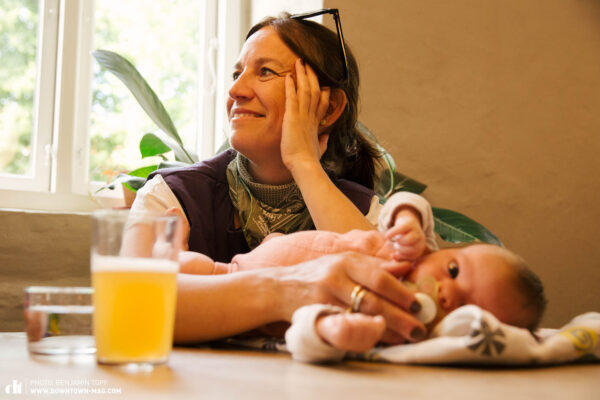
Breakfast, Cafés
The Coffee Collective
Coffee Collective is a roastery with a few locations around the city. It’s explicit with its sustainability principle and ensures that all its beans are fairly produced. You might spend a while ogling their pastries too – go on, they’re all delicious.Jægersborggade 57 | 2200 Copenhagen
instagram.com/coffeecollectif
La Banchina
The ideal spot to enjoy food and drinks on the waterfront, either before or after your sauna session and subsequent cold water dip. Try the Danish version of an organic Aperol Spritz and time your visit to coincide with sunset. Reservations not needed, just find some space.Refshalevej 141 | 1432 Copenhagen
labanchina.dk
Juno The Bakery – Sourdough and cardamom buns. Enough saidÅrhusgade 48 | 2100 Copenhagen
instagram.com/juno_the_bakery
Rapha Store – Hip bike apparel store with café and clubhouse vibesKristen Bernikows Gade, 7 | 1105 Copenhagen
rapha.cc
Ismageriet – 1950s style ice cream parlourRued Langgaards Vej 6e | 2300 Copenhagen
ismageriet.dk
Brunch and co.
Union Kitchen City
Breakfast, brunch, lunch, dinner and cocktails, fairly priced, well made and tasty. Sourdough, tick, burgers, tick. Top tip: chicken waffles and breakfast cocktails.Store Strandstraede 21 | 2100 Copenhagen
theunionkitchen.dk

Cocktail / Bars
Trykbar – Cosy pub atmosphere with a good selection of beer, whisky and cocktailsMøntergade 24 | 1116 Copenhagen
trykbar.dk
Brønnum – A cocktail bar in a historic buildingAugust Bournonvilles Passage 1 | 1055 Copenhagen
bronnumcph.dk
Ruby – The place to be for the past 15 yearsNybrogade 10 | 1203 Copenhagen
rby.dk


Dos
• Pay by card – cash is a rarity here
• Feel safe – crime levels are low here
• Drink tap water
• Ask for help or directions, they’re friendly people
• Have bike lights
• Go with the flow
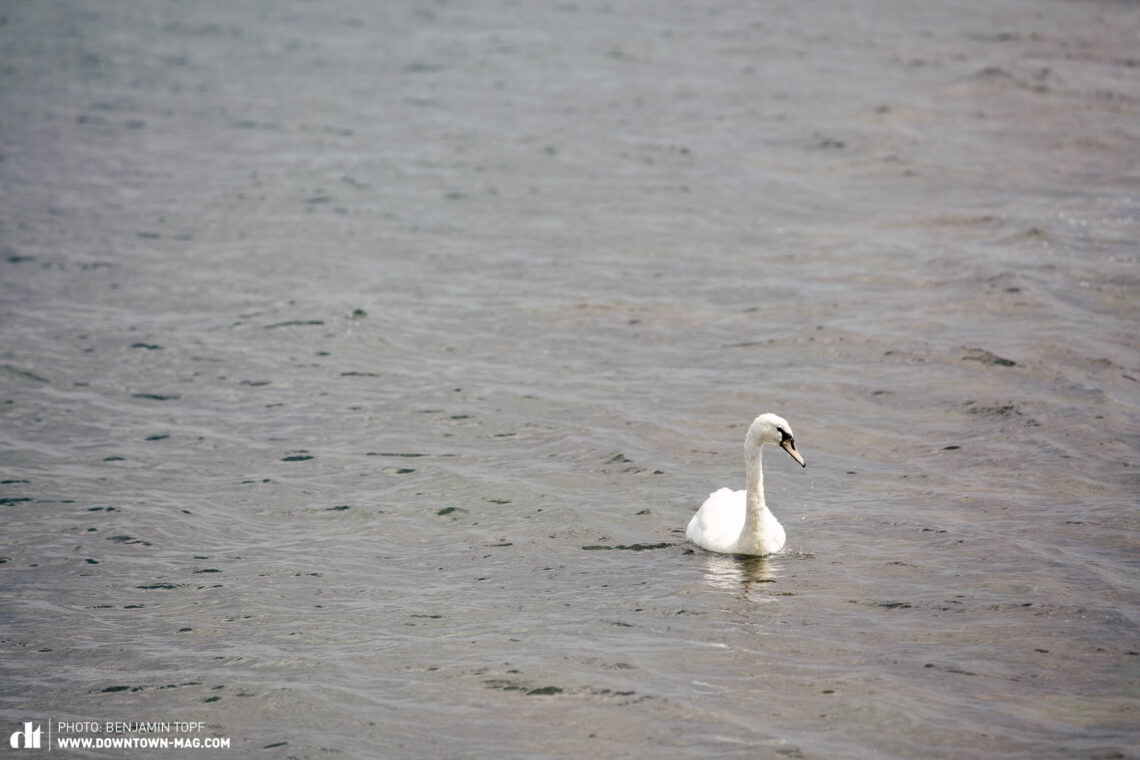
Dont’s
• Dine in Stroget or Nyhavn
• Stop to take photos in the middle of the bike path
• Never try to bribe a police officer
• Take photos in Christiania, especially not on Pusher Street
• Feed the pigeons
• Kiss, eat or kill any swans – they’re the national animal
• Visit the Little Mermaid, unless you really, really want to see it
• Have a tick-list of tourist sights
Danish for Beginners
If, like most of Europe, you also binged on Borgen and The Killing, you might have picked up a few sounds from the language. It isn’t pronounced exactly as it is written, which makes it quite tricky but have a go! Even though most Danes speak flawless English, they’ll appreciate the effort.
Hi – Hej (Hai)
Hello – Goddag (Godei)
Bye – Hej Hej (Hai Hai)
How are you? – Hvordan har du det? (Woldän har du di?)
Good, thanks. – God tak (Gods tack)
You’re welcome. – Velbekom (Wellbekomm)
Thanks. – Tak (Tack)
Yes. – Ja (Jä)
No. – nej (nei)
Excuse me – Undskyld (Unsgüll)
Goodbye – Vi ses (wiseis)
Cheers – Skol (Skol)
Help! – Hjälp (Jälp)
Watch out! – Advarsel! (Älvasl!)
I’m looking for my hotel – Jeg leder efter mit hotel (jei lehler äfter miit hotel)
Bike – Cykel (Zükell)
Left – vernstre (wensra)
Right – til hoejre (zehoira)
What’s the time? – Hvad er klokken? (Wel er klogn?)
Where’s the…? – Hvor er? (Wo är?)
What’s the cost? – Hvad koster (Wel koster)
Beer – Oel (Öl)
’m paying with cash – Jeg betaler kontant (Jai betäler kontänt)
6. Escape faster – Our Copenhagen-approved electric urban whips in detail
As a largely flat city without any major climbs, Copenhagen isn’t crying out for an e-bike but if you’re planning to go beyond the immediate city centre and take in the beaches to the south and the sights to the north, then you’ll appreciate the assistance. Plus, it’ll ensure you are always looking fresh, can carry bags and bags of shopping and you won’t get caught up in traffic. The WINORA Yakun deftly flits from bike lane to bridge to beach, giving you independence and imbuing you with enduring style that will stay with your new friends long after you’ve bid them farewell.
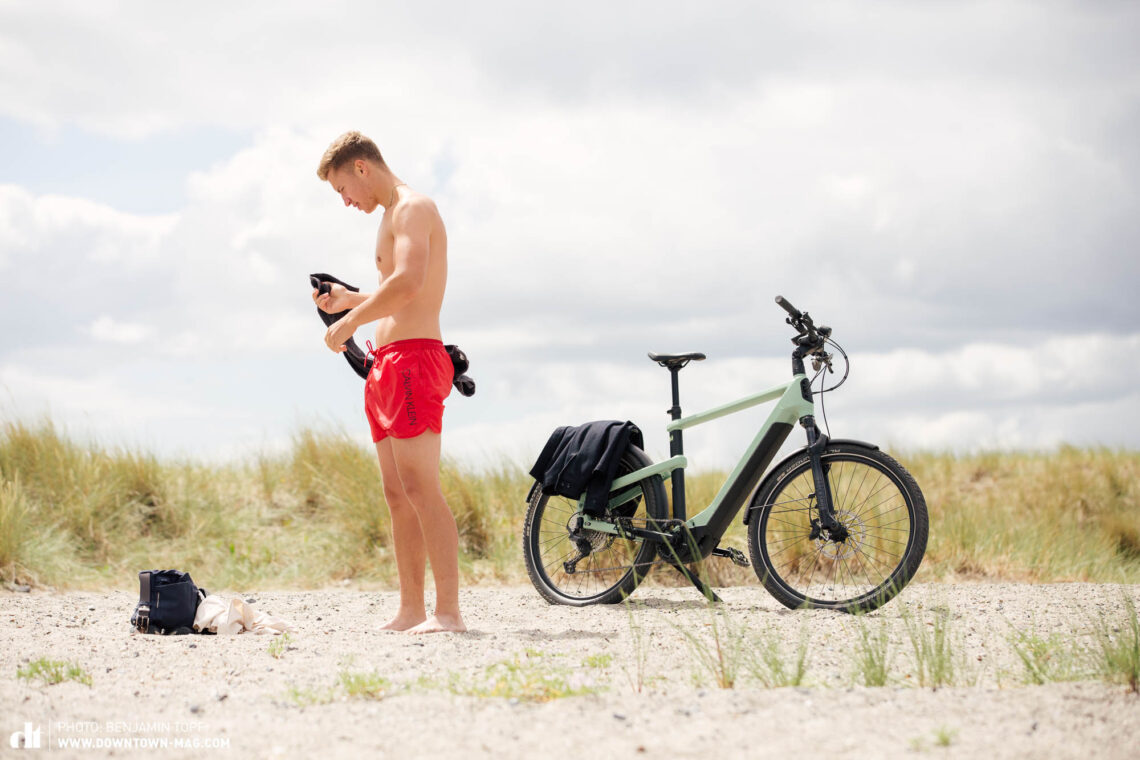
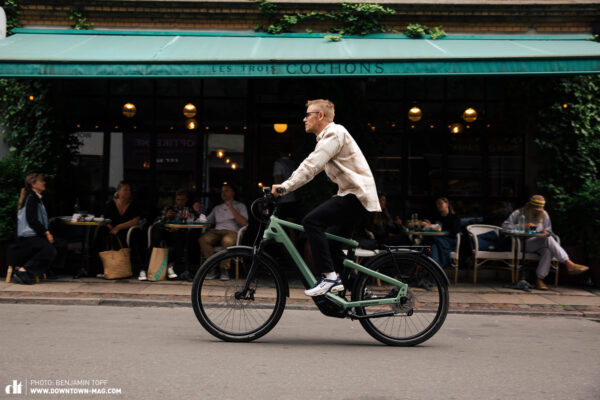

Our Bikes in detail
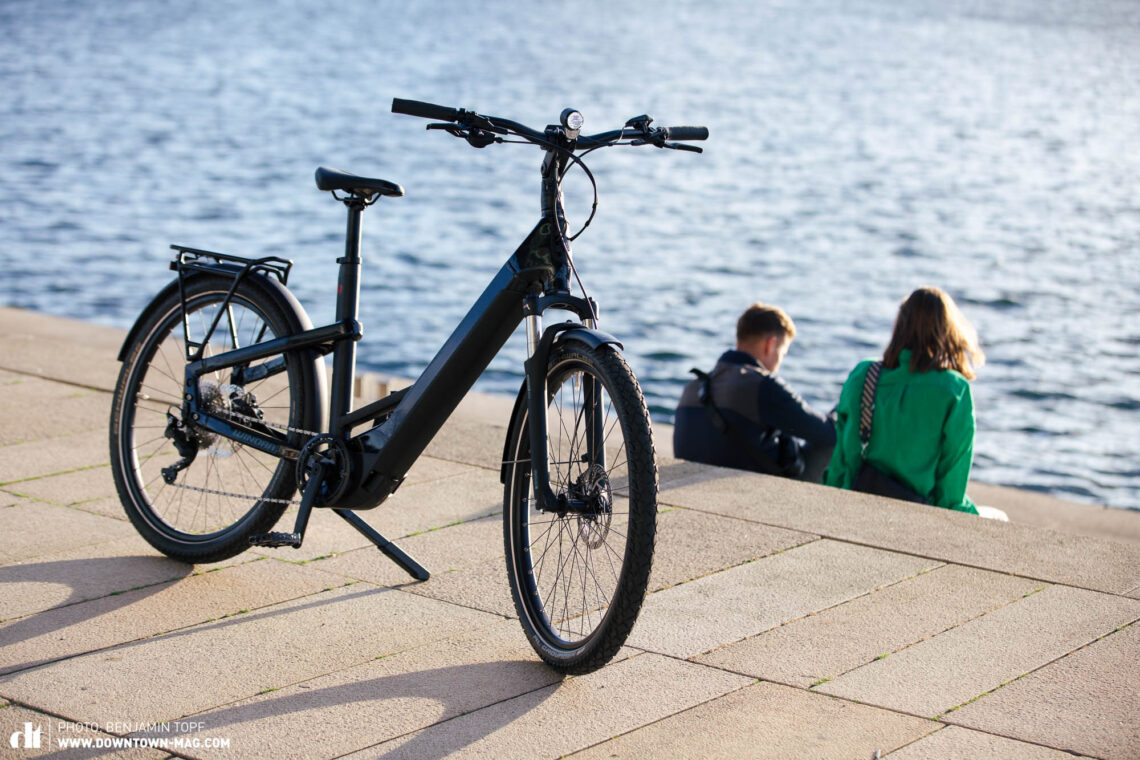
WINORA Yakun 10
The Yakun 10 represents WINORA’s entry-level trekking/hybrid bike. It’s a low-step through, super comfy ebike that’s ideal for all-day sightseeing around Copenhagen. Powered by a powerful Bosch Smart System motor, you can ride further (and faster, pedestrians permitting) around the flat city than you would otherwise. The motor has 85 Nm torque, so any usually strength-sapping climbs would be easy if they existed – as it stands, it’s as flat as a pancake, so just be confident that you’ll get away efficiently at traffic lights even in a heavy gear. In a hurry for a meeting? Whizz by the stream of nonchalant riders in Turbo mode. While the 750 Wh battery has a huge range, we can’t say for certain that you can cover all 200 canals without a charge. Thanks to the functional Modular Rail System, accessories like a bottle cage or bike lock can be easily mounted onto your down tube. If you’re carting a heavy load across town, the rear rack can hold up to 27 kg and it’s compatible with the MIK click system, allowing you to attach and remove a saddle pack on the rack in a matter of seconds.
Price: 3,999 €
Weight: 28.60 kg in size M
Travel: 75 mm (v)
Motor: Bosch Smart System
Battery: 750 Wh
Manufacturer’s website

WINORA Yakun 12
WINORA offers all of their Yakun lineup as both a step-through or with a classic diamond frame. Given the deconstructed design around the top tube and stays, the WINORA Yakun 12 would be worthy of a spot in any self-respecting design gallery in Copenhagen. We definitely caught people’s eyes as we cruised around town – these Yakuns are something else compared to the usual budget ebike or rusty townbike. The Yakun 12 is specced with hardwearing aluminium mudguards, lights, a kickstand, and frame-integrated rack. There’s even a dropper seat post (of sorts) with 150 mm of adjustment, which makes it not only really easy to get on and off but a big bonus for bike sharing. Add in the angle adjustability of the stem on the Yakun 12, and you’ve got the ideal co-bike. With the wide 2.4″ Schwalbe Al Grounder tires, you’ve got cushiness even before you think about the suspension fork. It rides smoothly over bumps in the road and even Copenhagen’s cobbles won’t ruffle its feathers. If you are bumping up and down curbs, go for it: the 80 mm of suspension from the RockShox Recon fork will lap it up.
Price: 4,299 €
Weight: 28.75 kg in size L
Travel: 80 mm (v)
Motor: Bosch Smart System
Battery: 750 Wh
Manufacturer’s website

WINORA Yakun R5 Pro
The Yakun R5 Pro that we rode around the Danish capital is WINORA’s top-of-the-line Yakun model. Instead of a standard chain, you’ve got the low-maintenance GATES CARBON BELT DRIVE taking care of power transmission. According to the manufacturer, it doesn’t require lube and won’t rust – even a daily lashing of the salty sea breeze shouldn’t affect it. The RockShox Recon fork has 80 mm of travel for all-road comfort. That means it shouldn’t be an issue to ride comfortably over bumpy town centres with awkward cobbles if you end up exploring anywhere away from Copenhagen’s well-developed bike path network. Taking cues from MTBing, the Yakun R5 Pro has powerful Shimano XT four-piston brakes that are intuitive and easy to modulate, taking the stress away from riding in a busy town. Up front, the Litemove AE-130 has a high and low beam so you’ll be well visible – even if the rest of the world is distracted by the red-light district. This Yakun model comes as standard with an easily removable front rack that’s permitted to carry up to 3 kg (that’s a lot of pastries).
Price: 4,699 €
Weight: 29.55 kg in size L
Travel: 80 mm (v)
Motor: Bosch Smart System
Battery: 750 Wh
Manufacturer’s website
Words: Susanne Feddersen Photos: Ben Topf




